Birds
AUSTRALASIAN Temperate Forest
The birds of the temperate forest and open Eucalyptus woodlands of Australia...
Family Casuariidae
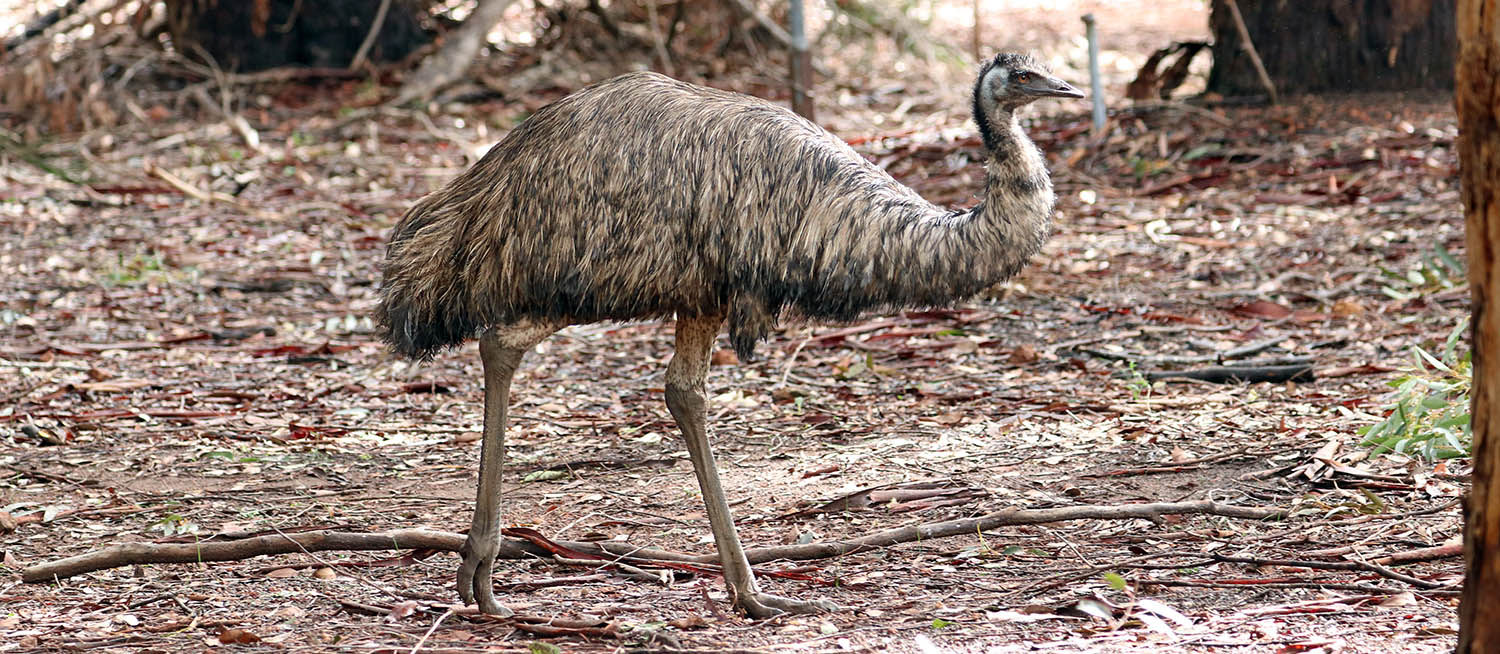 (Donnelly River, W.A.)
(Donnelly River, W.A.)Dromaius novaehollandiae, 'Emu'. Second tallest bird in the world, up to 190cm in height. Found in drier habitats across much of Australia.
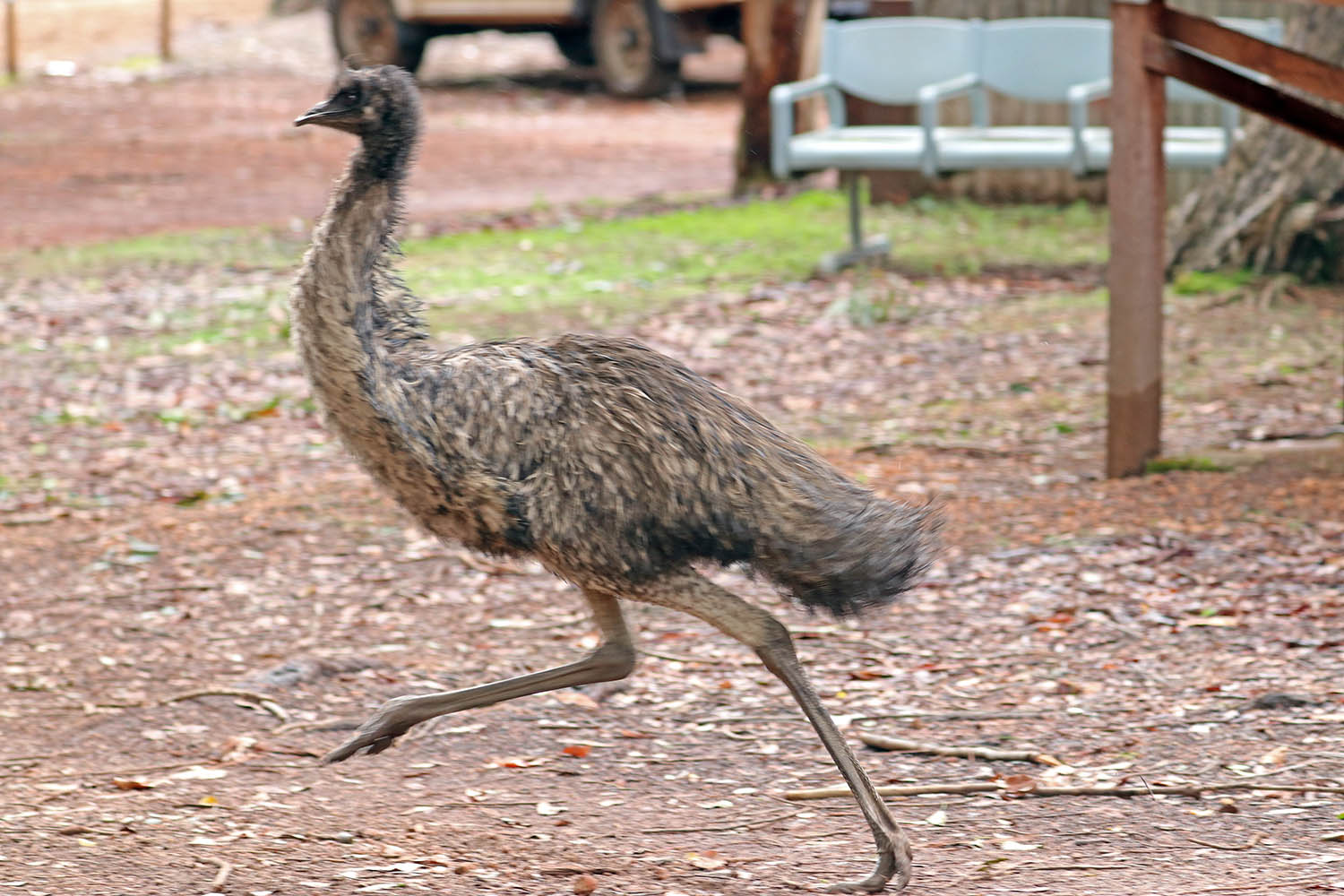 (Donnelly River, W.A.)
(Donnelly River, W.A.)Emus can run up to 50 kilometres an hour. With their billowy feather coat and jerky movements, they look like an panicking lady running in a large dress.
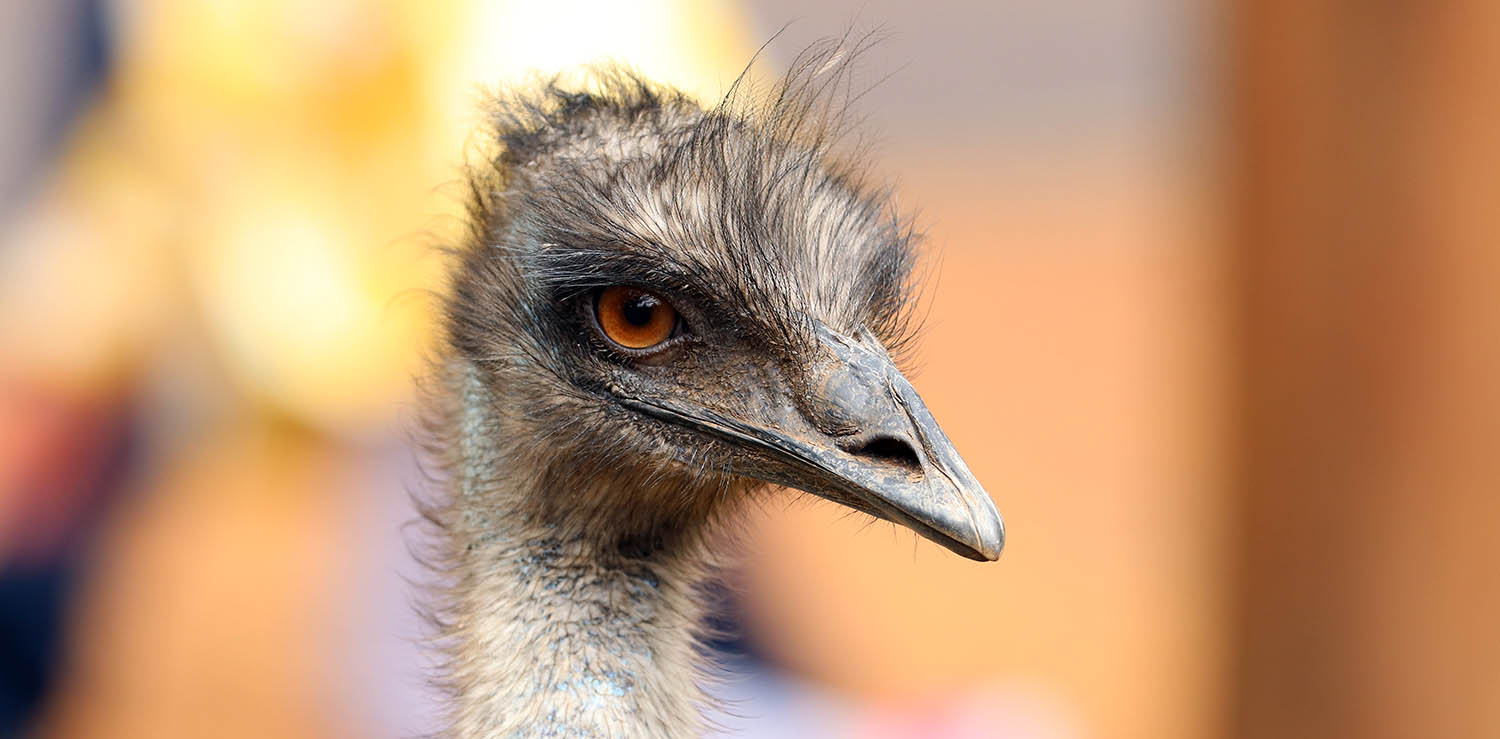 (Donnelly River, W.A.)
(Donnelly River, W.A.)Emus have nicitating membranes across their eye (a secondary eyelid) to protect them from dust.
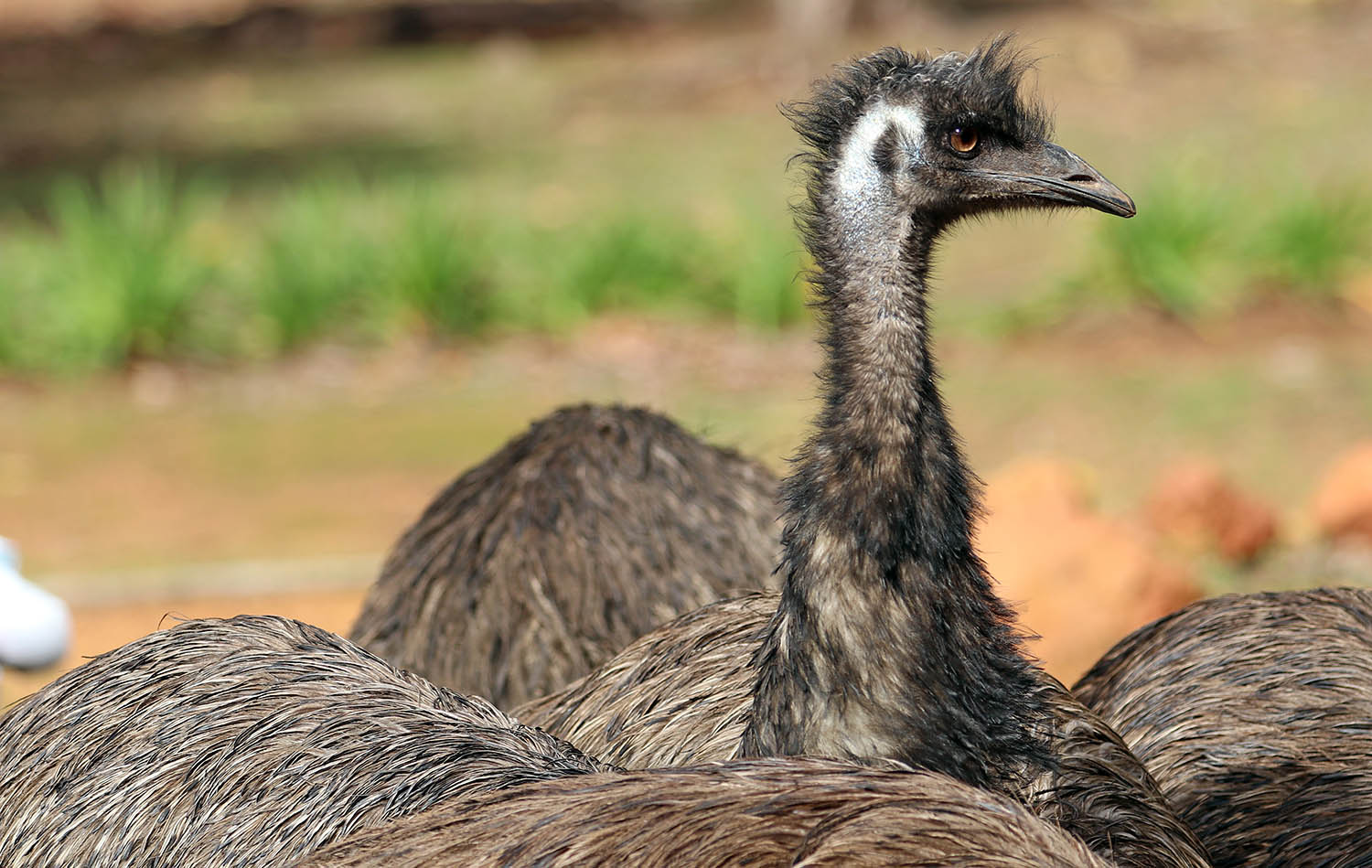 (Donnelly River, W.A.)
(Donnelly River, W.A.)Emus are often seen in pairs, family groups (father and chicks), or small flocks.
Family Anatidae: Ducks, Geese, Swans
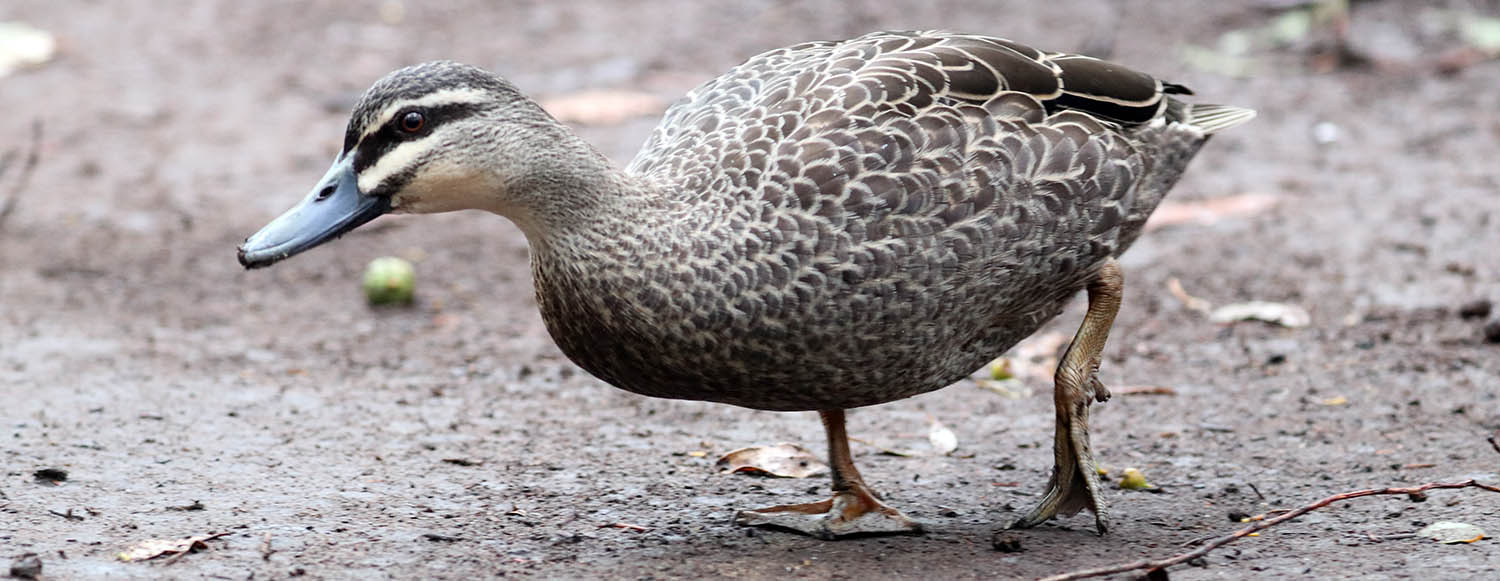 (Lane Poole, WA)
(Lane Poole, WA)Anas superciliosa, 'Pacific Black Duck'.
Family Columbidae: Pigeons and Doves
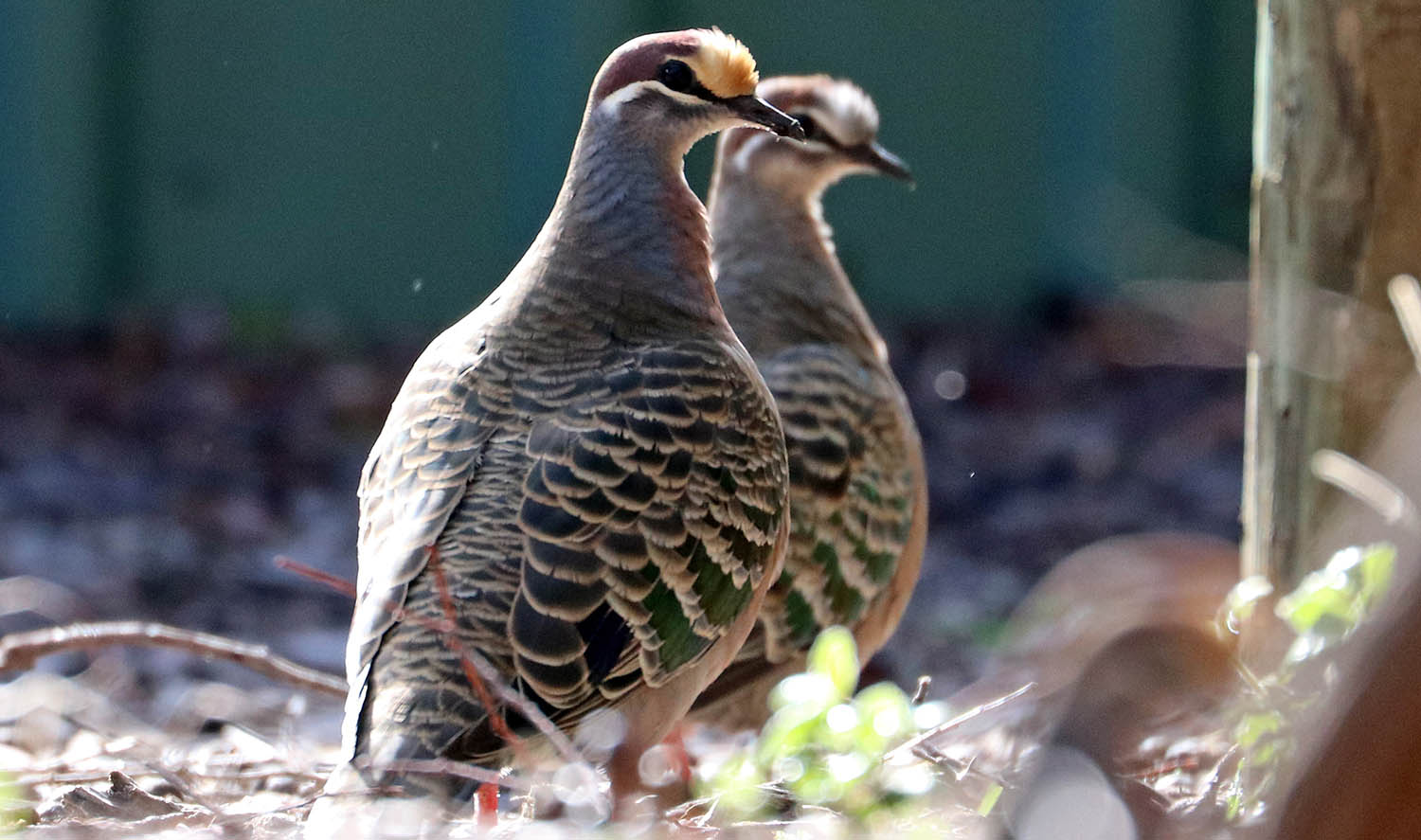
When most people think of 'pigeon', they think of your average urban introduced species; however, there are many subtly beautiful species of native pigeon in most Australian habitats, including the temperate woodlands & forests.
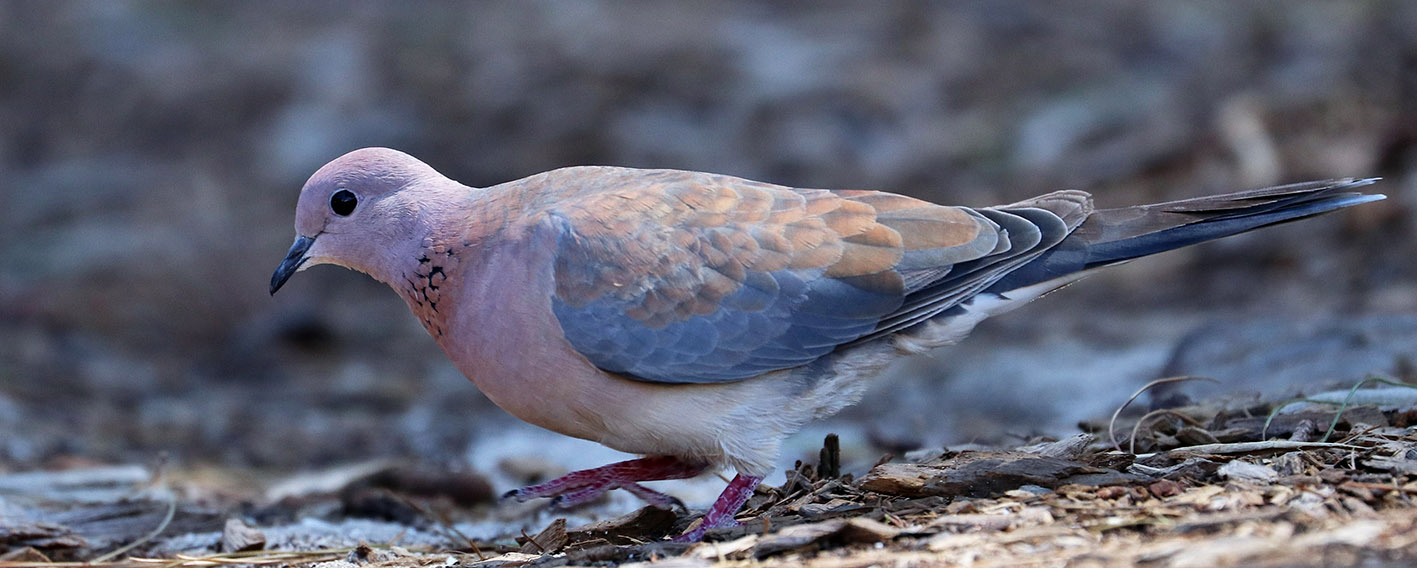
Spilopelia senegalensis, 'Laughing Dove' (Rottnest Island). An introduced species, native to Africa, Middle-east and India; feral population in south-west Australian woodlands.
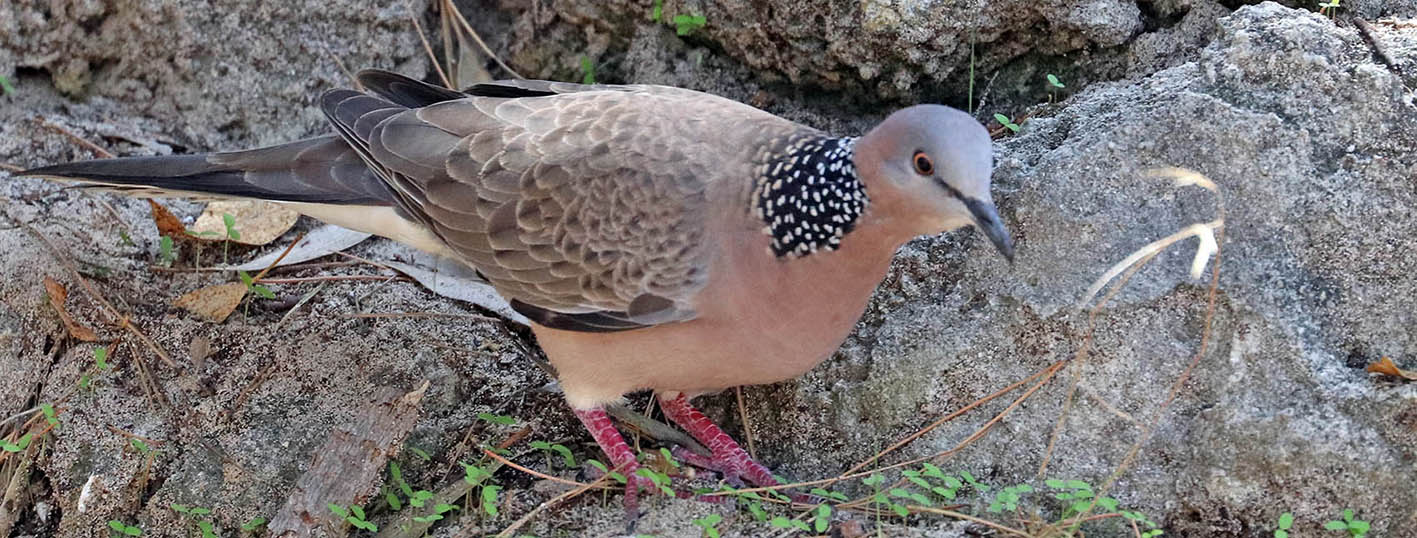 (Rottnest Island)
(Rottnest Island)Streptopelia chinensis, 'Laughing Dove'. An introduced species from Asia now found in south-east and south-west urban areas, farms and woodlands in Australia.
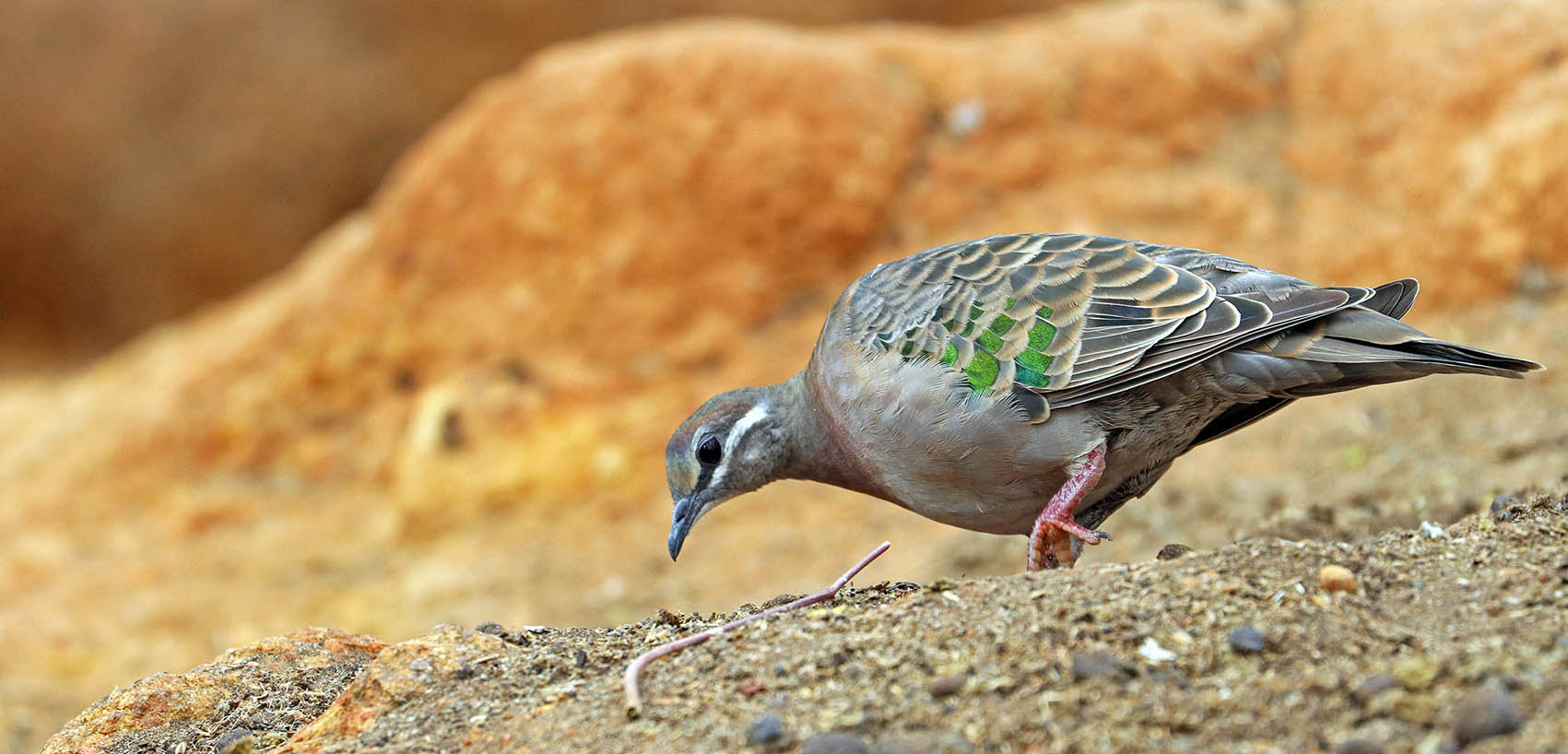 (John Forrest National Park)
(John Forrest National Park)Phaps chalcoptera, 'Common Bronzewing'.
Family Accipitridae: Hawks, Kites, Eagles
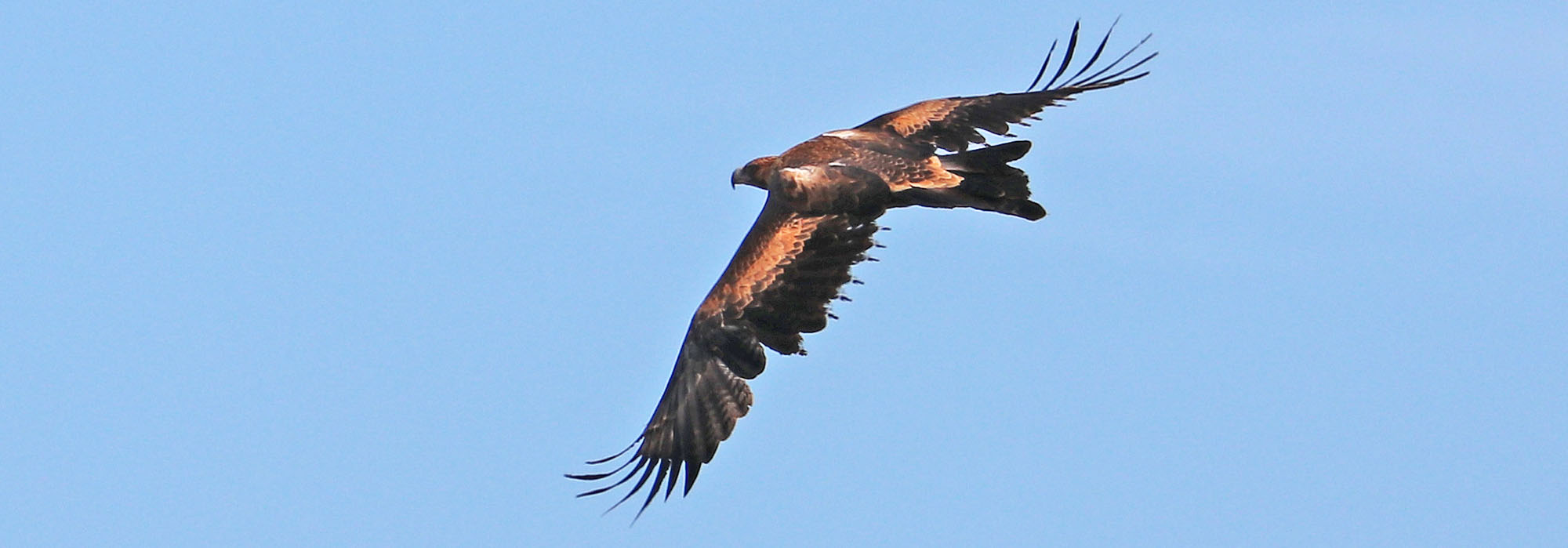 (Dryandra, WA)
(Dryandra, WA)Aquila audax, 'Wedge-tailed Eagle'. Largest bird of prey in Australia. Found in the drier open habitats across much of the continent.
Family Tytonidae: Barn Owls
Family Strigidae: Typical Owls
Family Meropidae Bee-eaters
Family Coraciidae: Rollers
 (Emerald, Queensland)
(Emerald, Queensland)Eurystomus orientalis, 'Oriental Dollarbird'. Often appears dark in silhouette, with only red bill looking colourful; but if seen in the right light, the pretty colours of the blue body are apparent. Breeds in eastern Australia every southern summer, then in winter migrates into tropics of New Guinea and Asia.
Family Alcedinidae: Kingfishers
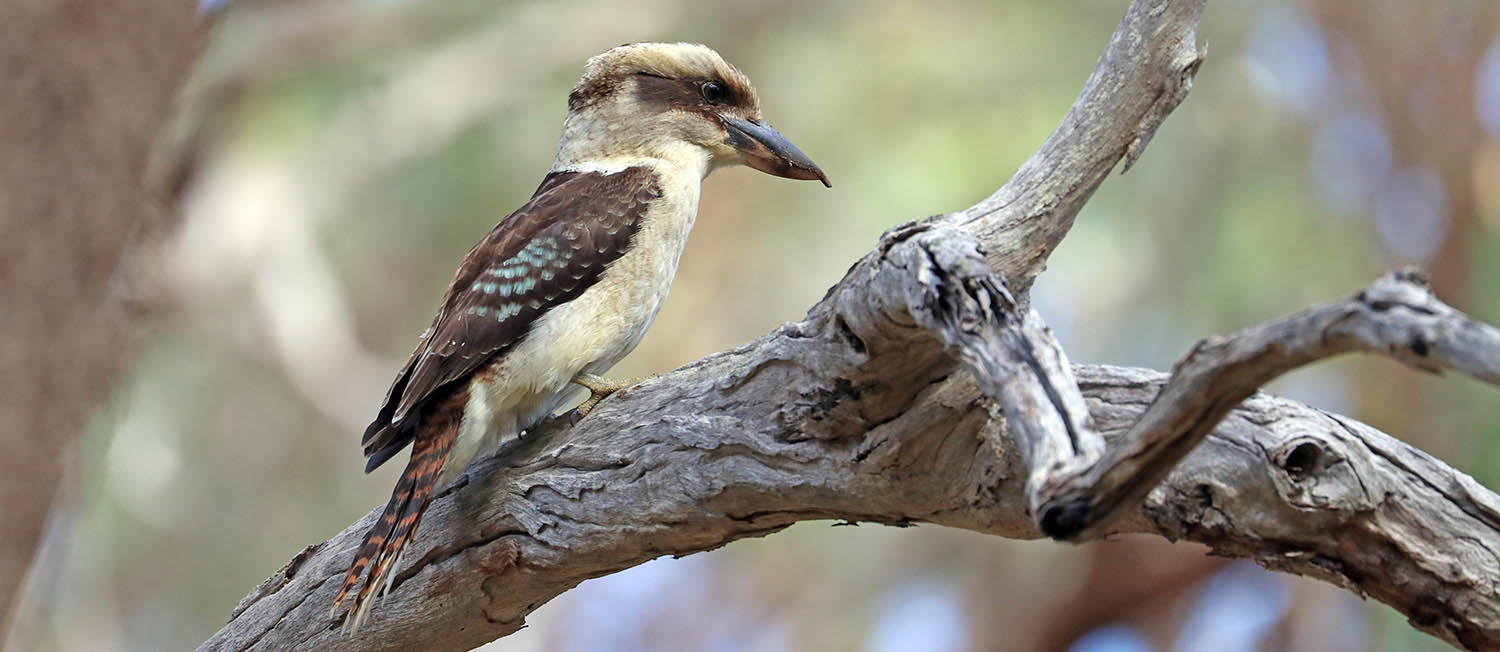 (Yanchep, Western Australia)
(Yanchep, Western Australia)Dacelo novaeguineae, 'Laughing Kookaburra'. Often calls right at dawn and dusk.
Family Falconidae
Order Psittaciformes: Parrots, including Cockatoos & Lorikeets
‘Parrots’ belong to their own order, the Psittaciformes. They are mainly found in the southern continents and the tropical regions of the world. There are many different kinds of parrots, yet they comprise a distinctive group of birds that most anybody would recognize because of a suite of familiar characteristics.
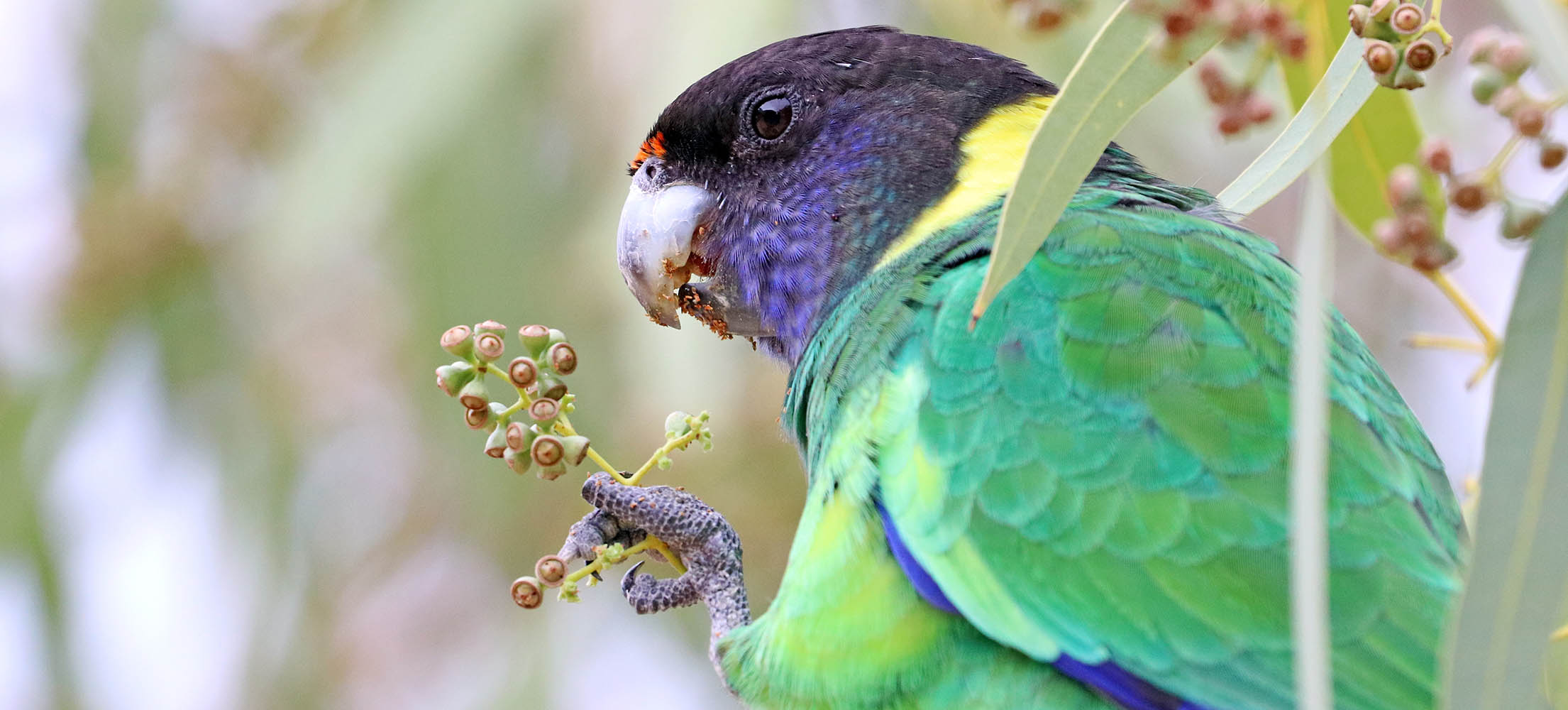 (Kings Park, Western Australia)
(Kings Park, Western Australia)The skin around the eye is often obvious, enlarged and appears fleshy, the bill is usually well developed, with a large hooked, down-curved upper mandible, over a smaller up- curved lower mandible. The arrangement of the feet is also unusual, with two toes pointing forward, and two backwards. Parrots also have some distinctive features of their behaviour and life cycle. Most species are monogamous, and many species appear to bond for life. Most do not build nests, but raise their young in the existing hollows of trees, or excavate holes in banks, cliff faces, or termite mounds. Parrots are not territorial and quite sociable, and can thus occur in large flocks. They are often nomadic, flying fast and wide to take advantage of varying resources. Most parrots have basic screeching calls that are not thought of as particularly melodi- ous, but the highly sociable nature of parrots may have resulted in the development of many different calls for different purposes, including soft contact calls, warning calls, or calls made just previous to take off.
 (Kings Park, Perth)
(Kings Park, Perth)There are more species in the Neotropical rainforests than anywhere else, but it is in Australia where the group attains their greatest ecological, morphological and colour diversity, and they can be found from the deserts to the tropical rainforests. The parrots of Australia's temperate forests range include white, black, pink, blue, and even species with every colour of the rainbow!
Family Cacatuidae: Cockatoos
This family includes about 21 species. They are mostly found in Australia and New Guinea, with a few species in Indonesia and one in the Philippines.
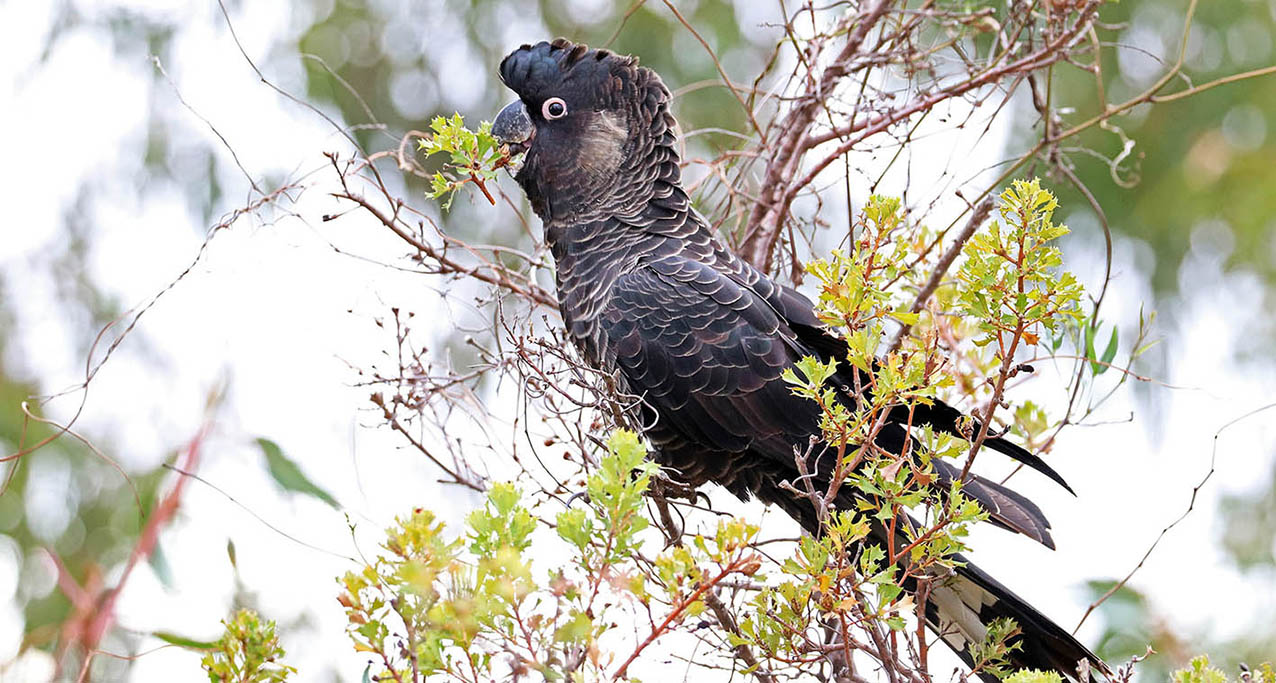 (Yanchep, Western Australia)
(Yanchep, Western Australia) Cockatoos usually have a bare colourful patch on the face around the eye, a periophthalmic ring, which gives them a sleepy or surprised expression. While the colour of the female's eye varies, apparently all male cockatoos have brown irises.
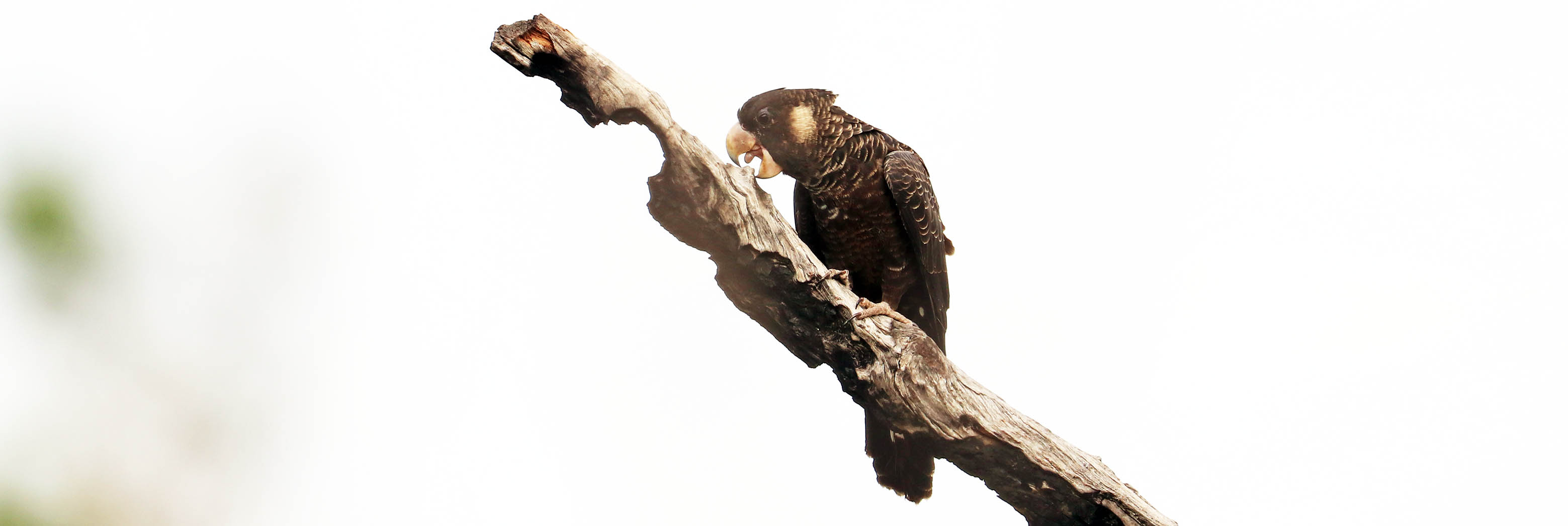 (Yanchep National Park)
(Yanchep National Park)Cockatoos have strong bills which are used for breaking hard fruits to predate on the seeds. They have muscular tongues that can further manipulate their food.
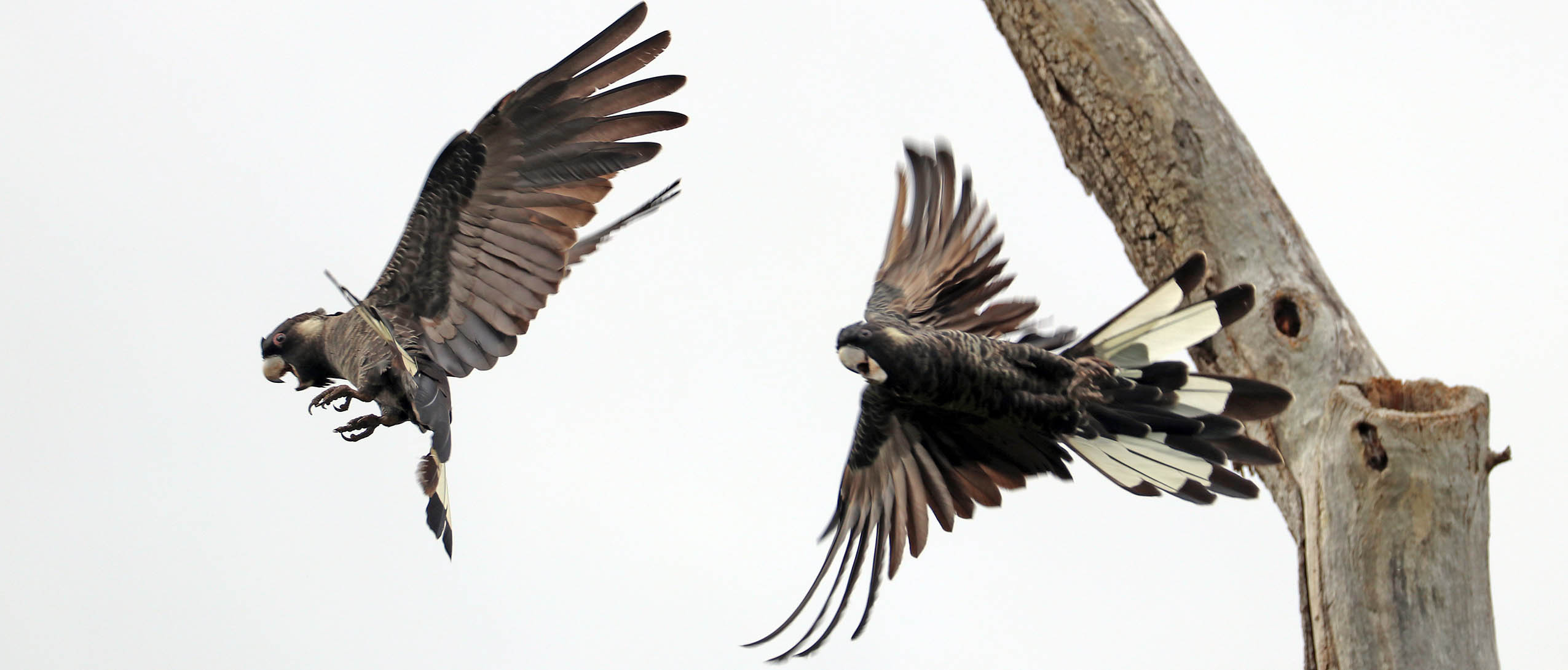 (Yanchep National Park)
(Yanchep National Park)Cockatoos are very sociable. But this doesn't mean they always get on, and they can have noisey fights. Even their friendly contacts calls can include ear-splitting screeches.
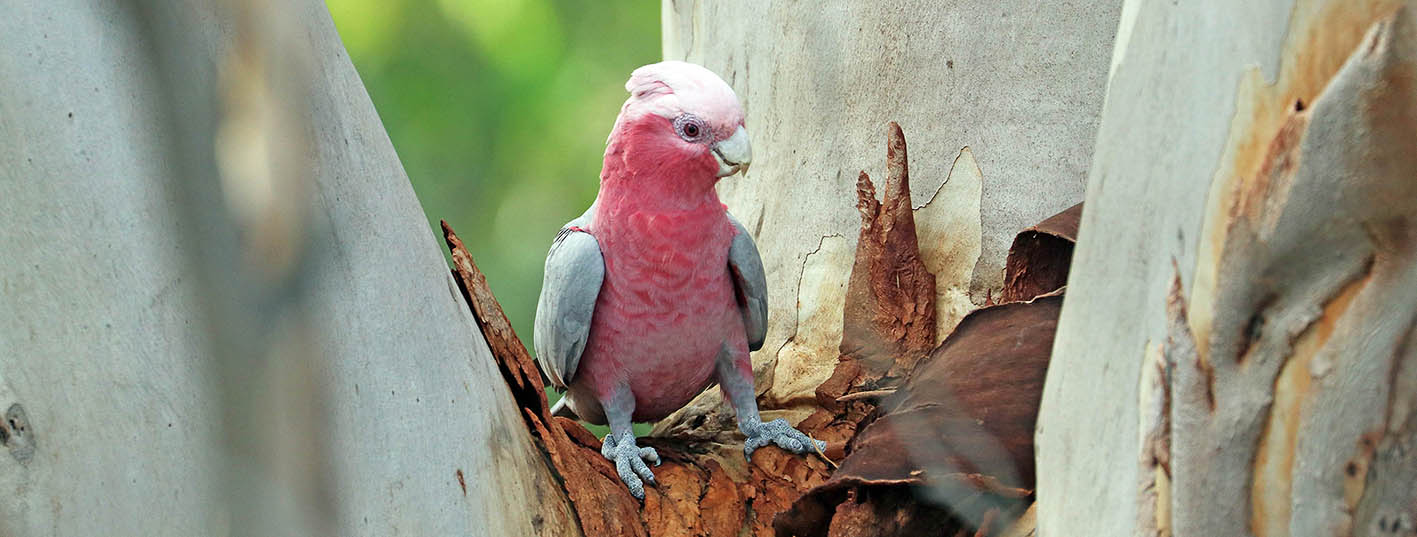 (Kings Park, Perth)
(Kings Park, Perth)Eolophus roseicapilla, 'Galah'.
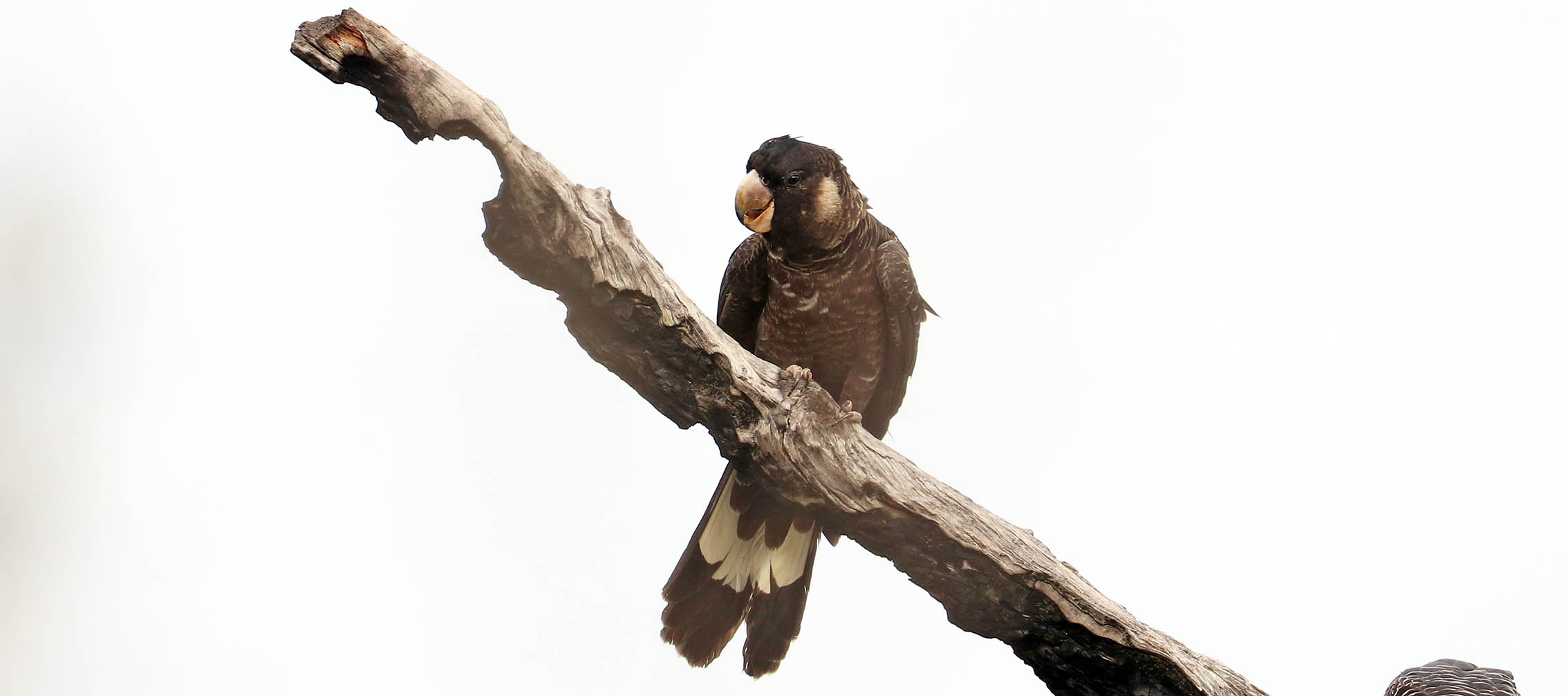 (Kings Park, Perth)
(Kings Park, Perth)Zanda latirostris, 'Carnaby's Black Cockatoo'.
Family Psittaculidae: 'True Parrots'
 (John Forrest, Western Australia)
(John Forrest, Western Australia)Purpureicephalus spurius, 'Red-capped Parrot'.
 (Whiteman Park)
(Whiteman Park)Barnardius zonarius semitorquatus, '(Eighty-eight) Ringneck Parrot'. Distinguished by its green belly and red patch above bill.
Platycercus spp. 'Rosellas'
These parrots were named for a suburb called Rose Hill where they were commonly seen; over time their name morphed from "Rose Hiller" to "Rosella".
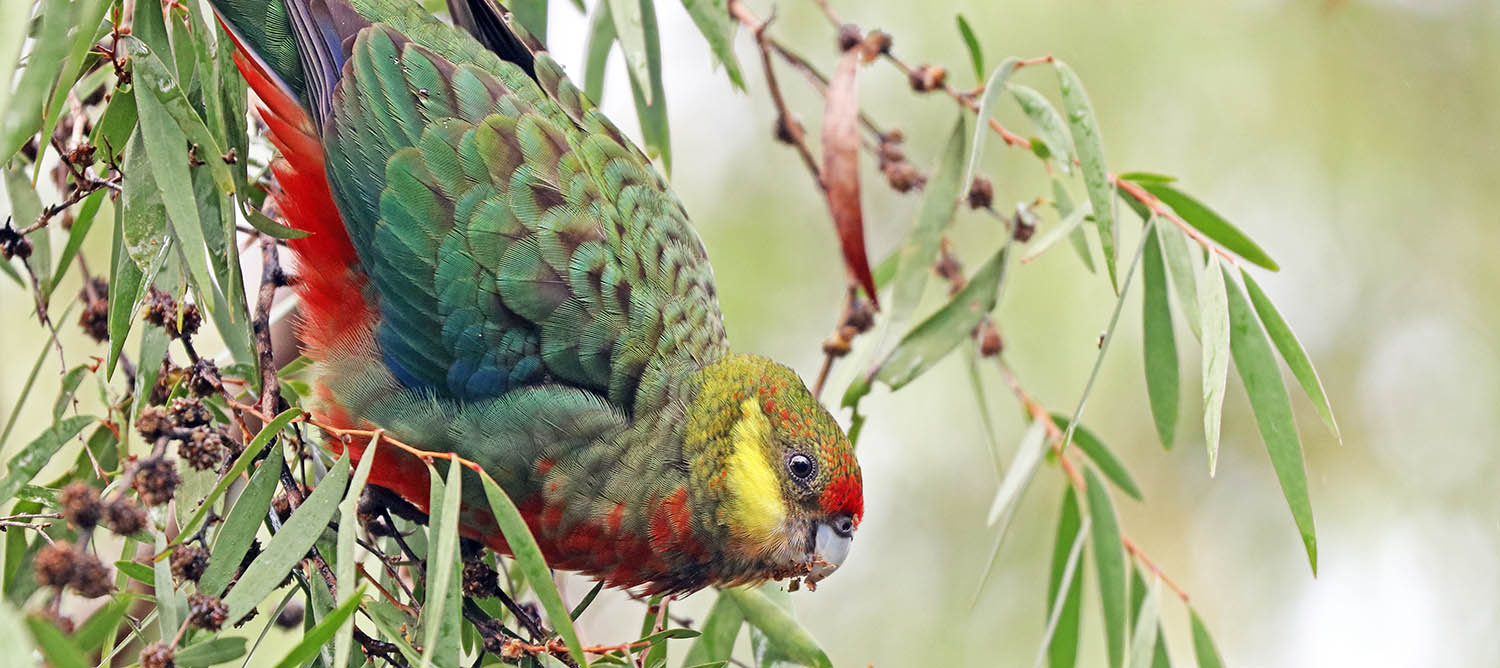
 (Nornalup, Western Australia)
(Nornalup, Western Australia)Platycercus icterotis, 'Western Rosella' male (lower image) and female (upper image).
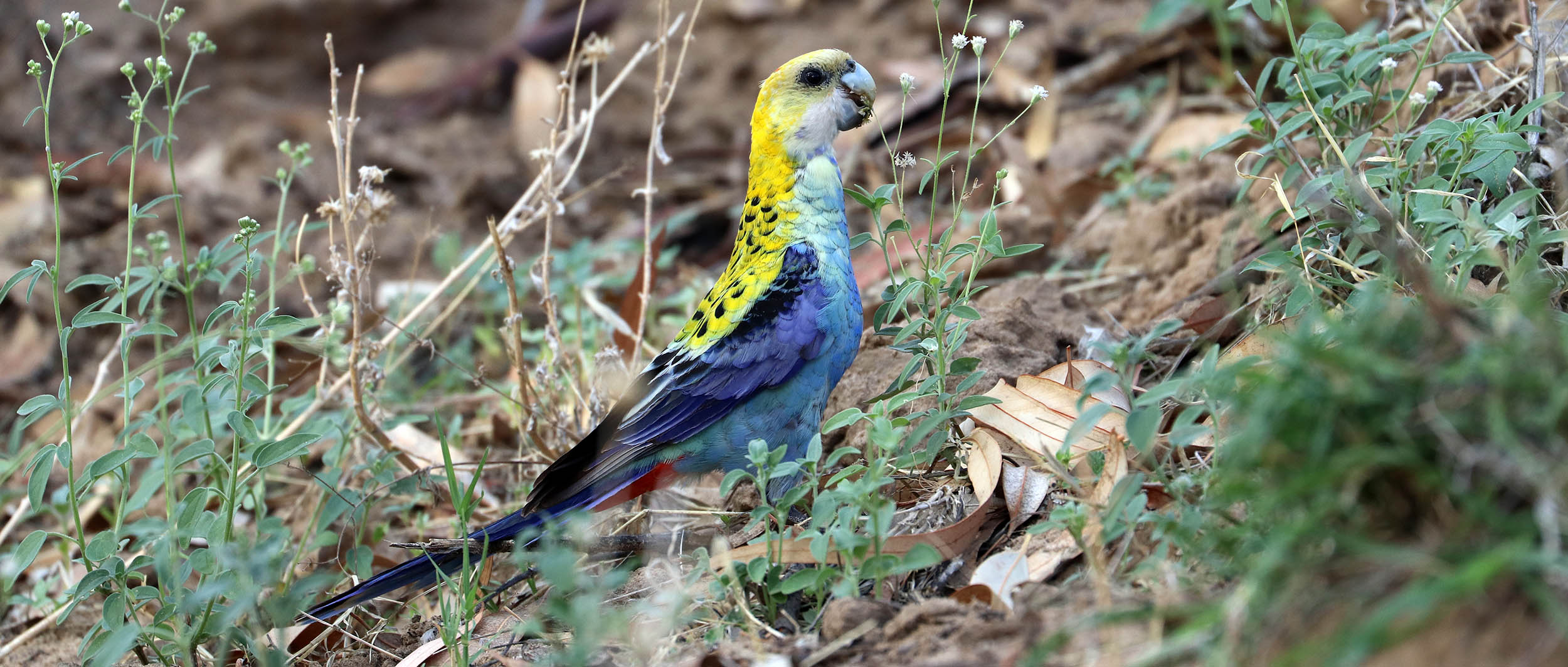
Platycercus adscitus, 'Pale-headed Rosella'. Found in temperate and tropical open forest and woodlands in eastern Australia.
Neophema spp.
Small green parrots with a bill relatively flat to the face, that gives the head a stumpy un-parrot like profile
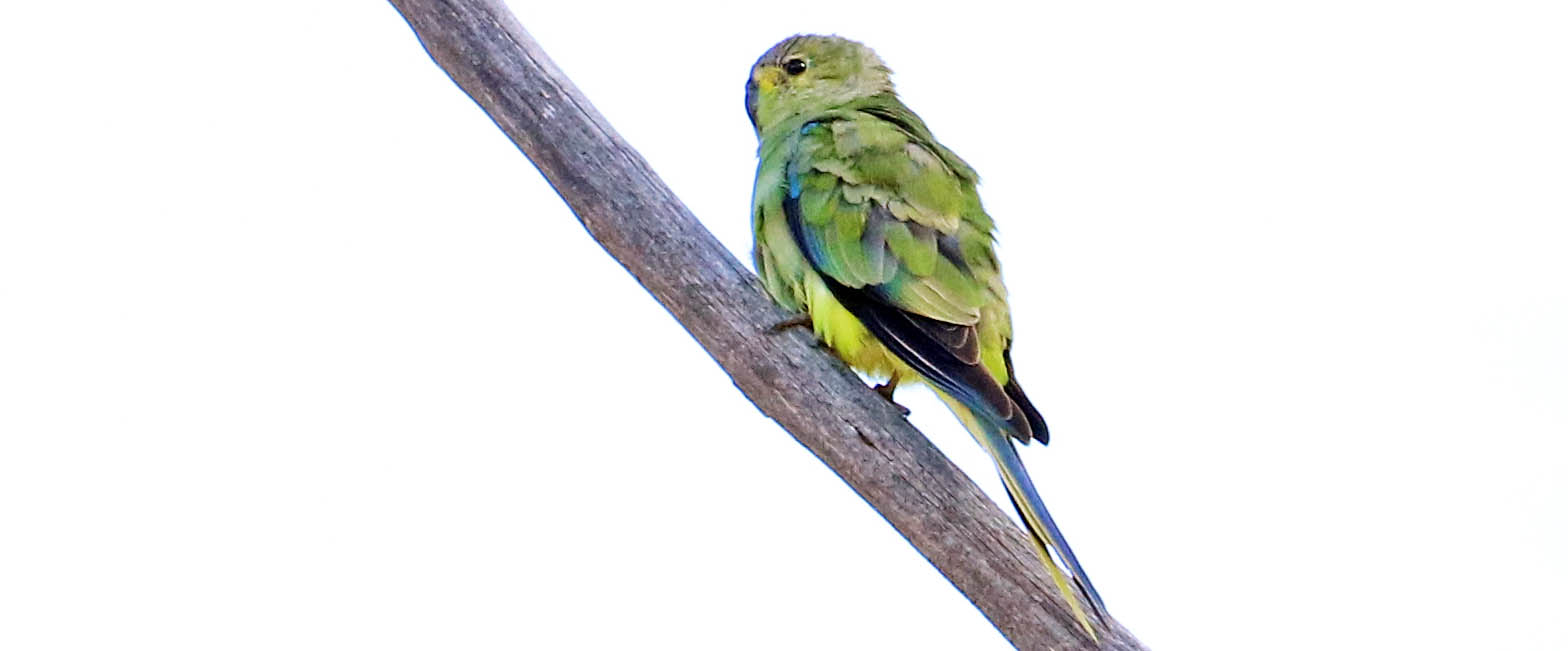 (Dryandra, W.A.)
(Dryandra, W.A.)Neophema elegans, 'Elegant (Grass) Parrot'. Strange 'flat' face profile. Found in woodlands in south western and central southern Australia.
'Lorikeets'
Parrots that slurp on nectar with brush-tipped tongues.
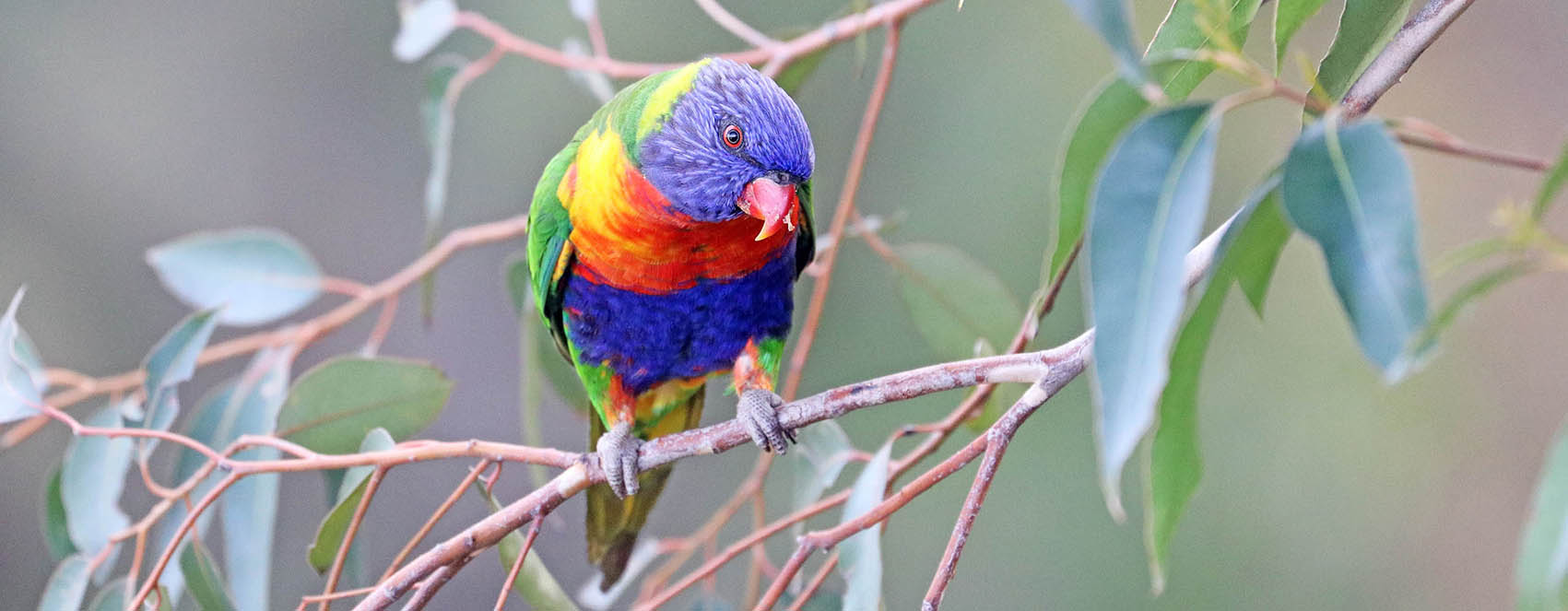 (Kings Park, Perth)
(Kings Park, Perth)Trichoglossus moluccanus, 'Rainbow Lorikeet'.
Family Climacteridae: Treecreepers
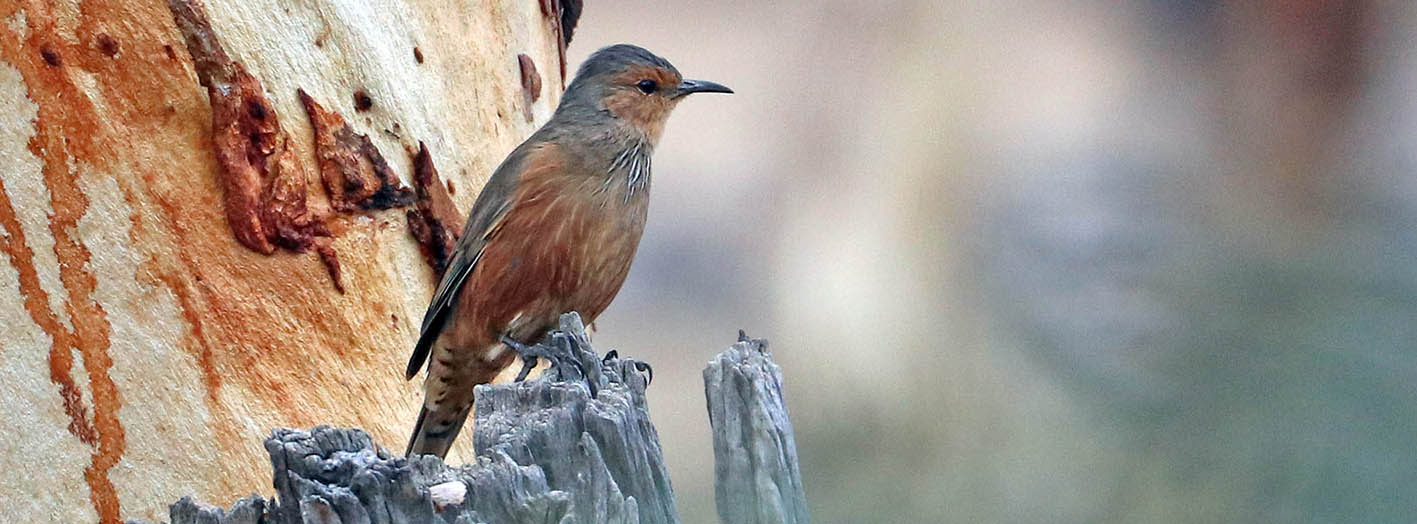
'Western (Rufous) Treecreeper' (Dryandra, Western Australia).
Order Passeriformes
Family Maluridae: Australian Wrens
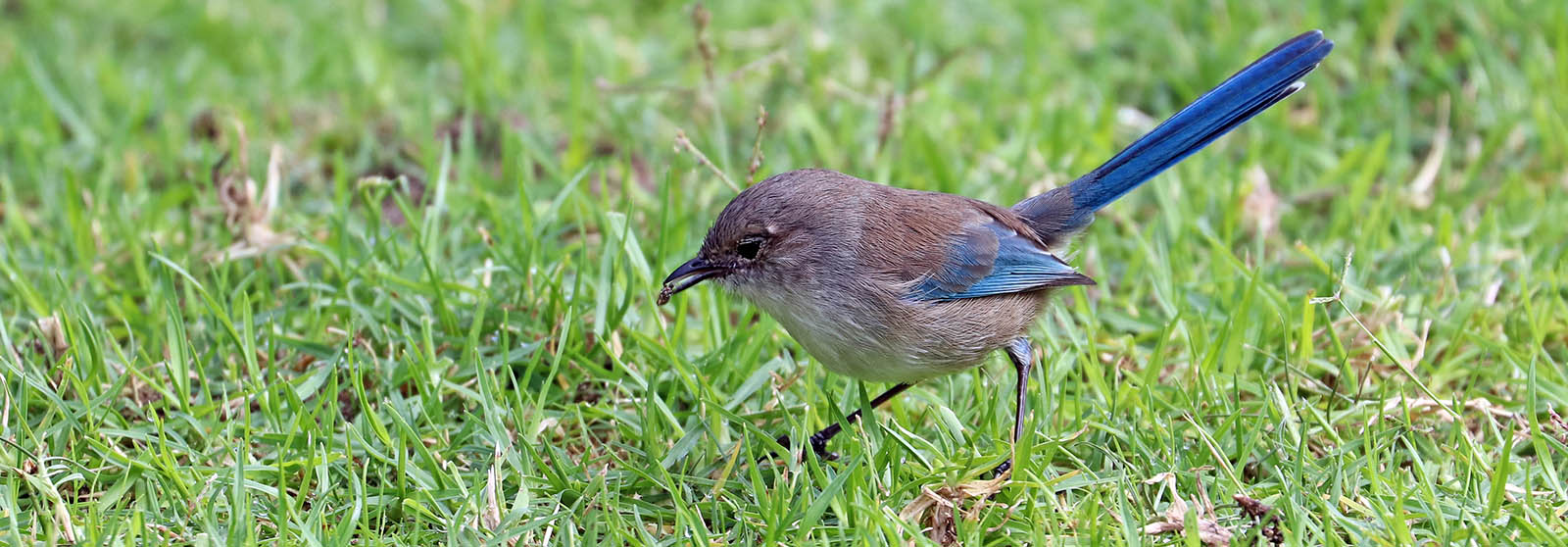 Fairy Wren (Yanchep, Western Australia)
Fairy Wren (Yanchep, Western Australia)While the breeding males of fairy wrens are very colourful, females and juveniles are duller in colour.
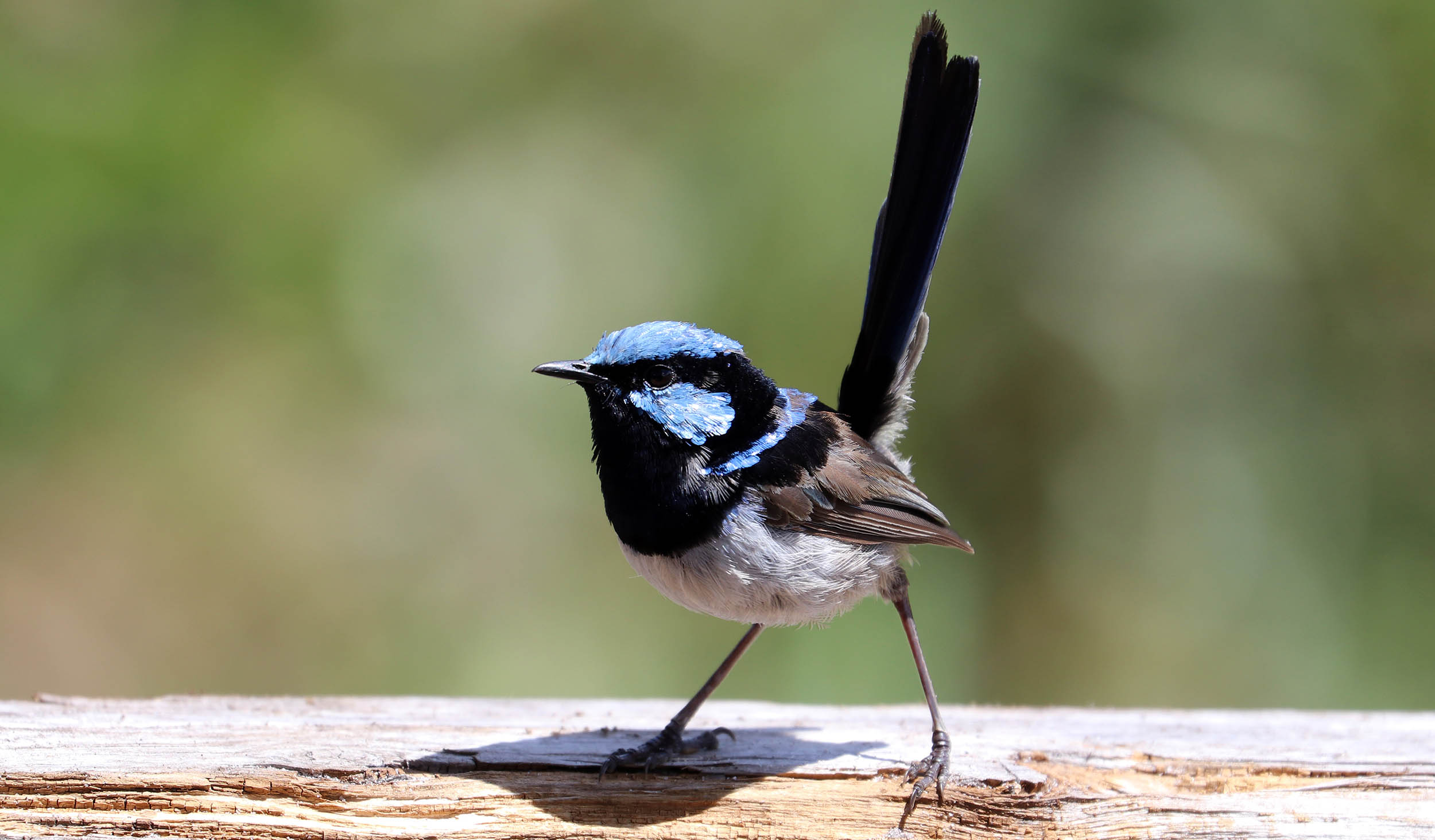 (Wineglass Bay, Tasmania)
(Wineglass Bay, Tasmania)Malurus cyaneus, 'Superb Fairy Wren'. Found across south-east Australia, west to Eyre Peninsula north to central Queensland.
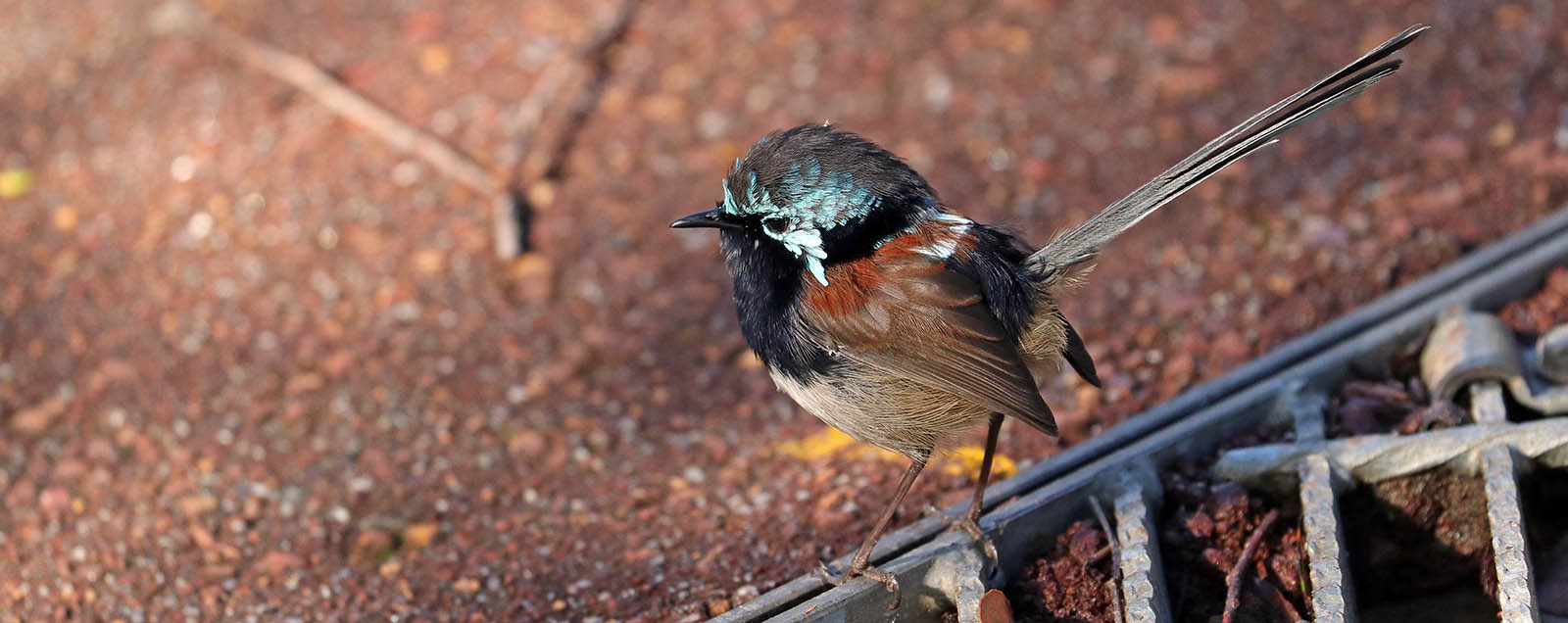 Red-winged Fairy Wren (Valley of the Giants carpark, Walpole, Western Australia)
Red-winged Fairy Wren (Valley of the Giants carpark, Walpole, Western Australia)Malurus elegans, 'Red-winged Fairy Wren'. Endemic to south-west of Australia.
Family Acanthizidae: Australian Warblers, including Thornbills
This large and relatively recently revised family includes many different types of birds. In the Australian temperate forests they are represented by such groups as scrubwrens and thornbills. These constitute many of the small and initially indistinct birds of the forest, also known colloquially as ‘little brown jobs’. However, a bit of patience and closer inspection reveals many of the species to be quite attractive.
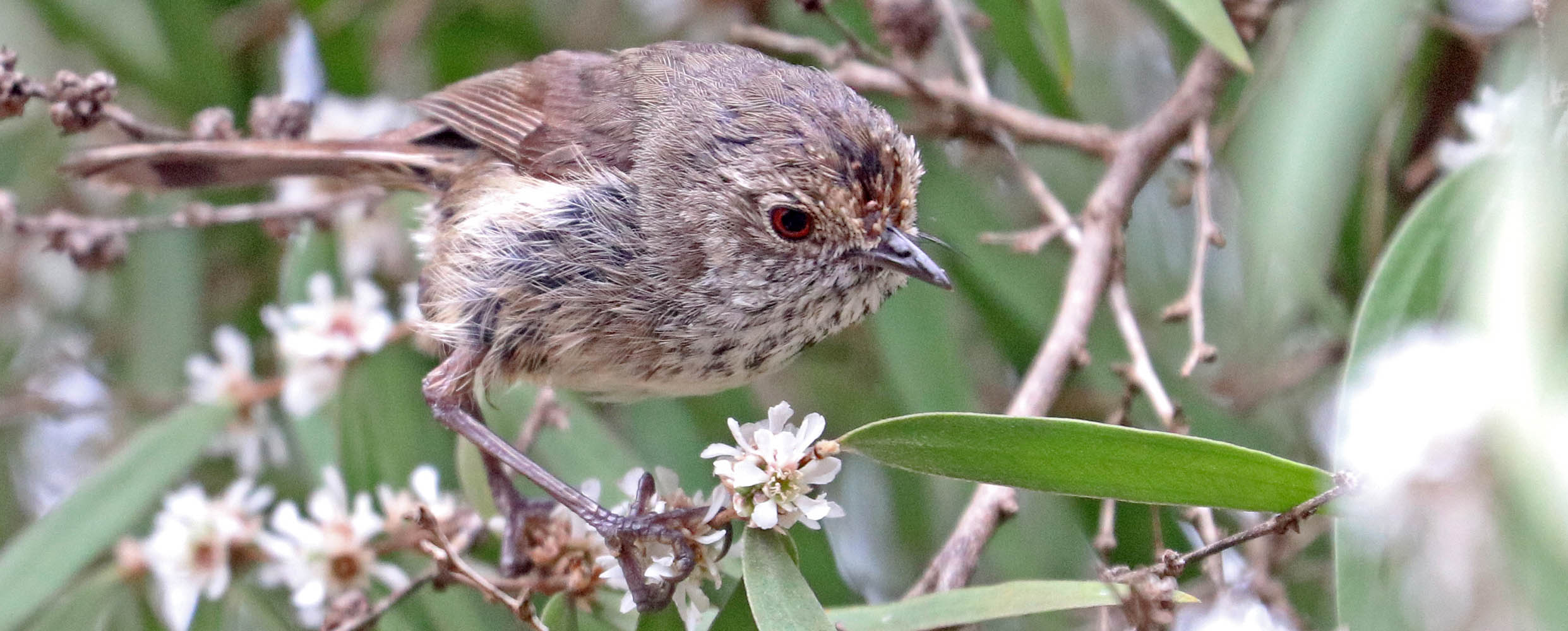 (Kangaroo Island, South Australia)
(Kangaroo Island, South Australia)Acanthiza pusilla (zietzi), 'Brown Warbler' (subspecies). Streaky, with red eye.
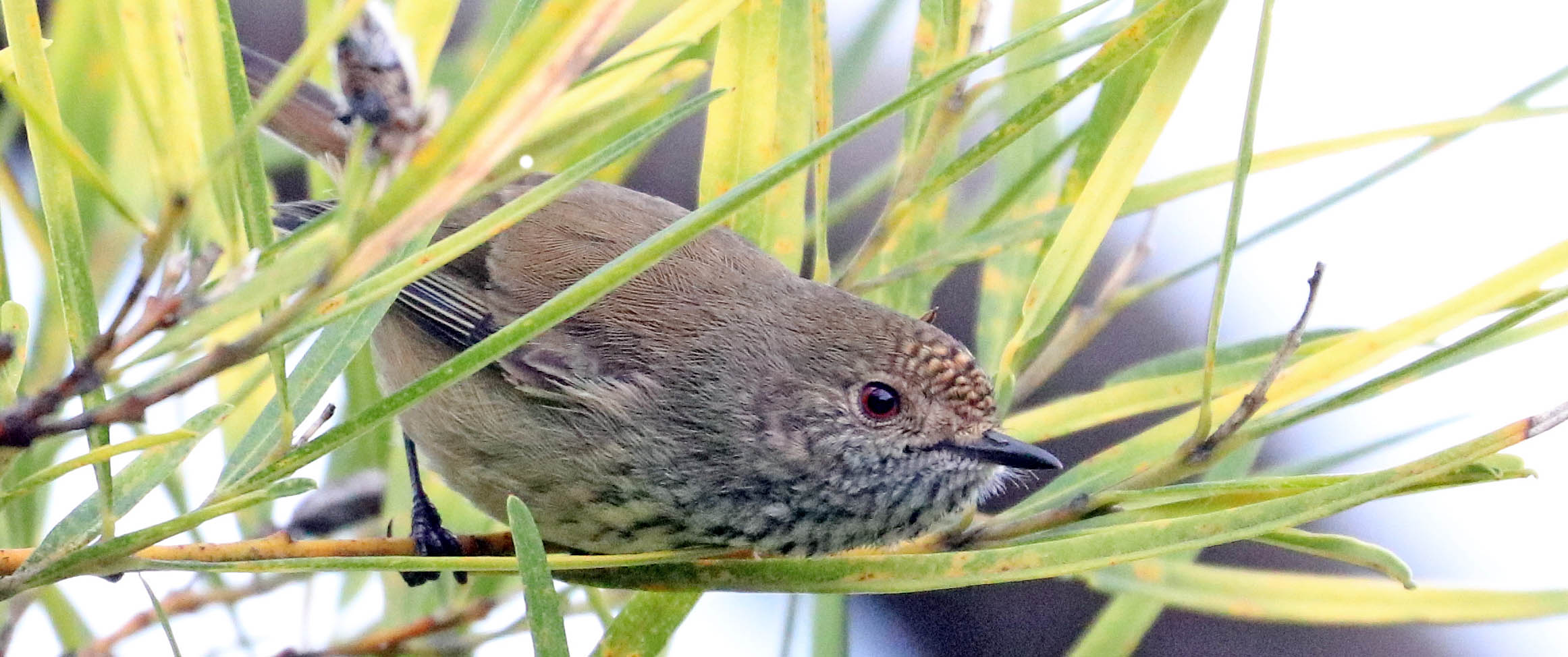 (Mt. Franklin, Western Australia)
(Mt. Franklin, Western Australia)Acanthiza apicalis, 'Inland Thornbill'. Streaky, with dull red eyes. Very similar to the Brown Thornbill. This species is widespread across southern and inland Australia, and present in drier areas than the Brown Thornbill, including the south-west.
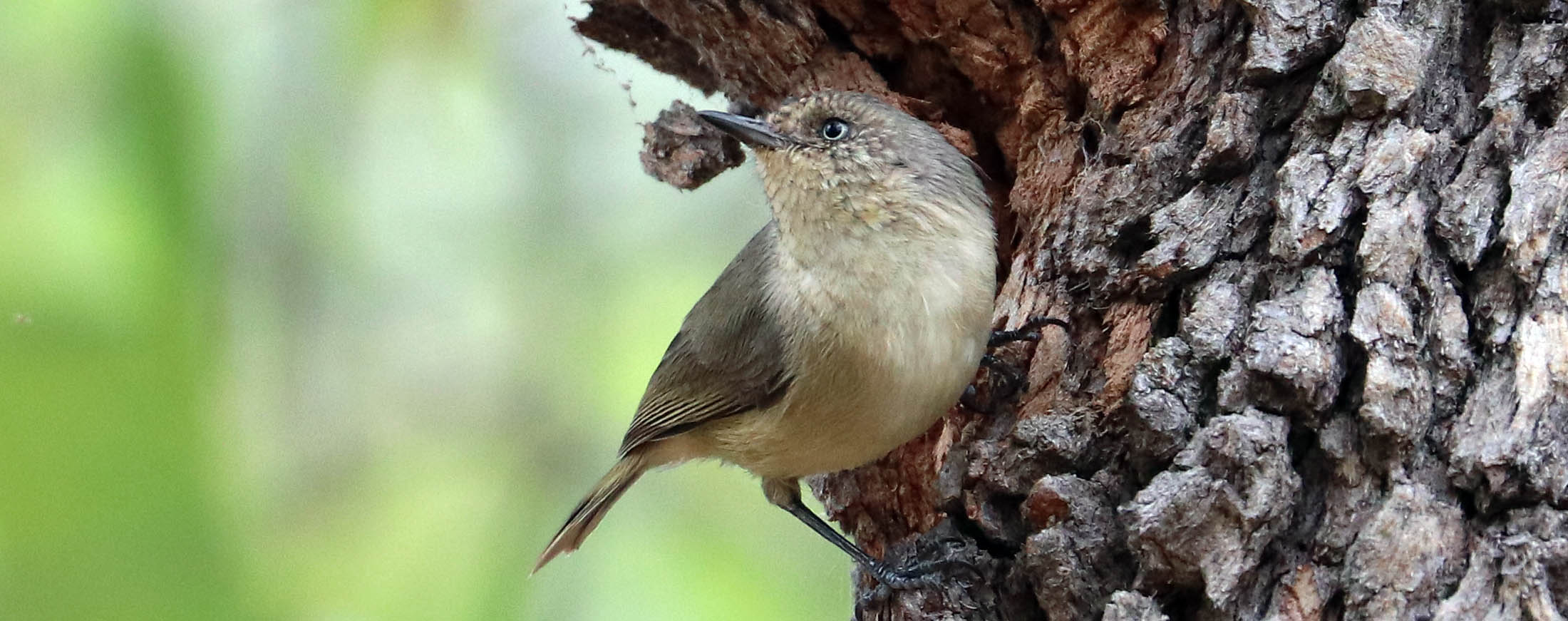 (John Forrest, Western Australia)
(John Forrest, Western Australia)Acanthiza inornata, 'Western Thornbill'. Light blue eyes. This species is found in woodlands of south-western Australia.
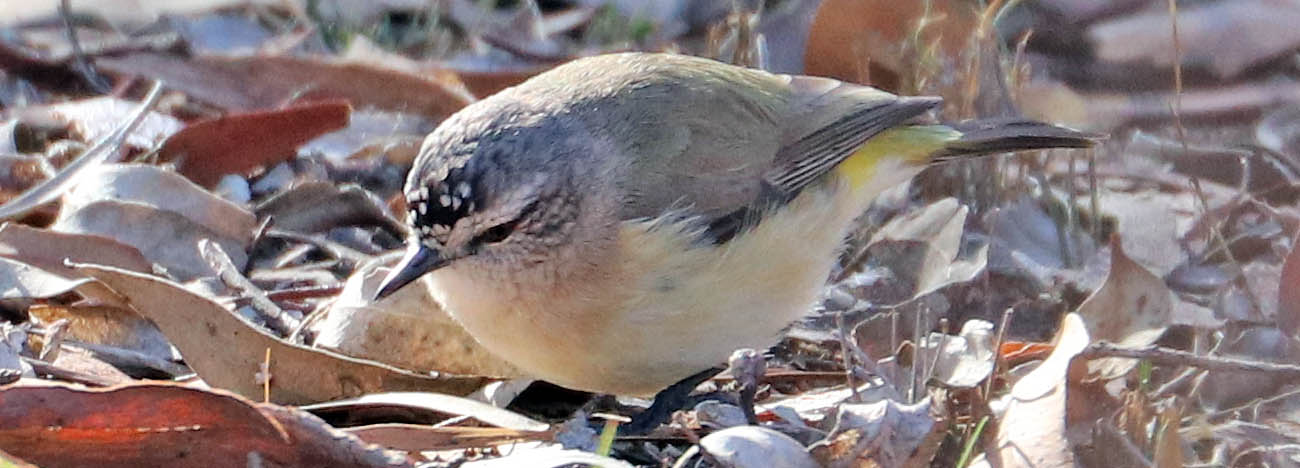 (Dryandra)
(Dryandra)Acanthiza ichrysorrhoa, 'Yellow-rumped Thornbill'. Most distinctive of the thornbills, being larger, and with bright yellow and black on tail. This species is found across much of southern and inland Australia.
Family Meliphagidae: Honeyeaters
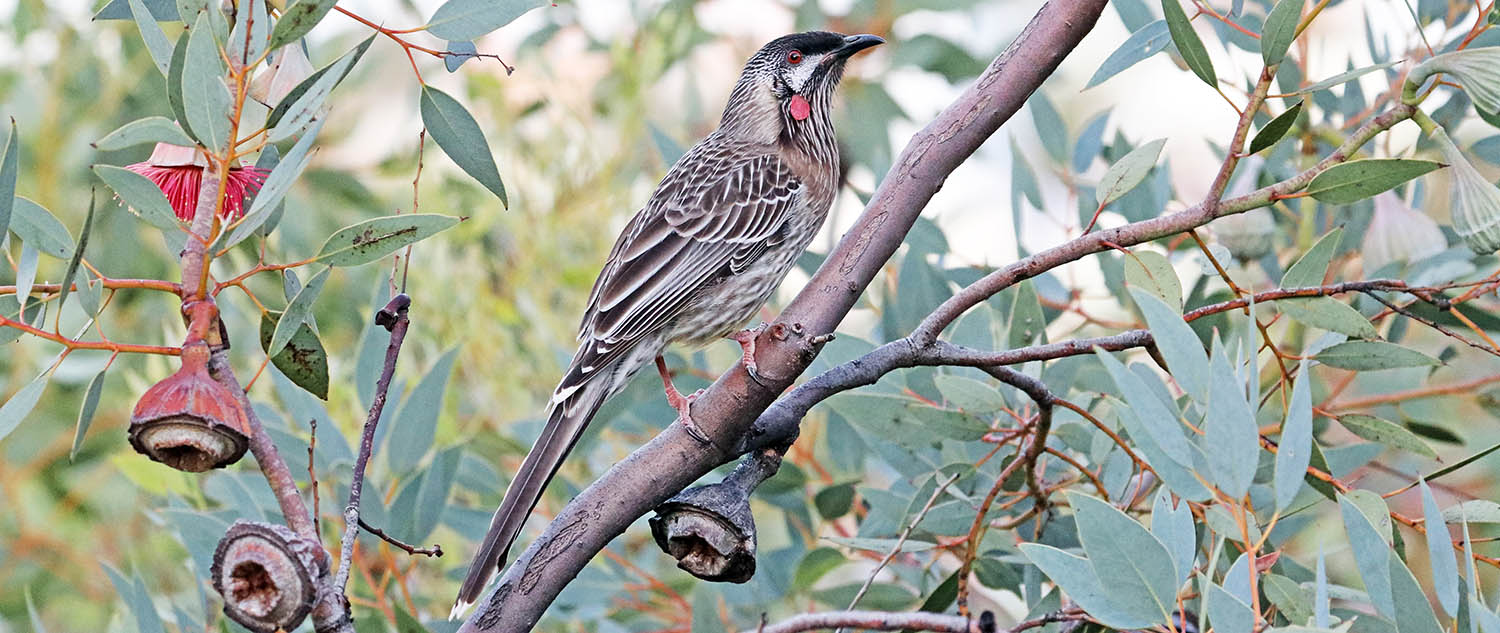
Anthochaera carunculata, 'Red Wattlebird'. Found in woodlands and into gardens. Distributed across south-eastern Australia, up to southern Queensland, and the most commonly seen wattlebird of south-west Australia.
 Dryandra WA
Dryandra WALichmera indistincta, 'Brown Honeyeater'. One of Australia's most adaptable and widespread honeyeaters, found in various habitats including rainforest, mangroves and woodlands, across much of the country and into New Guinea, only absent in the drier parts of the south.
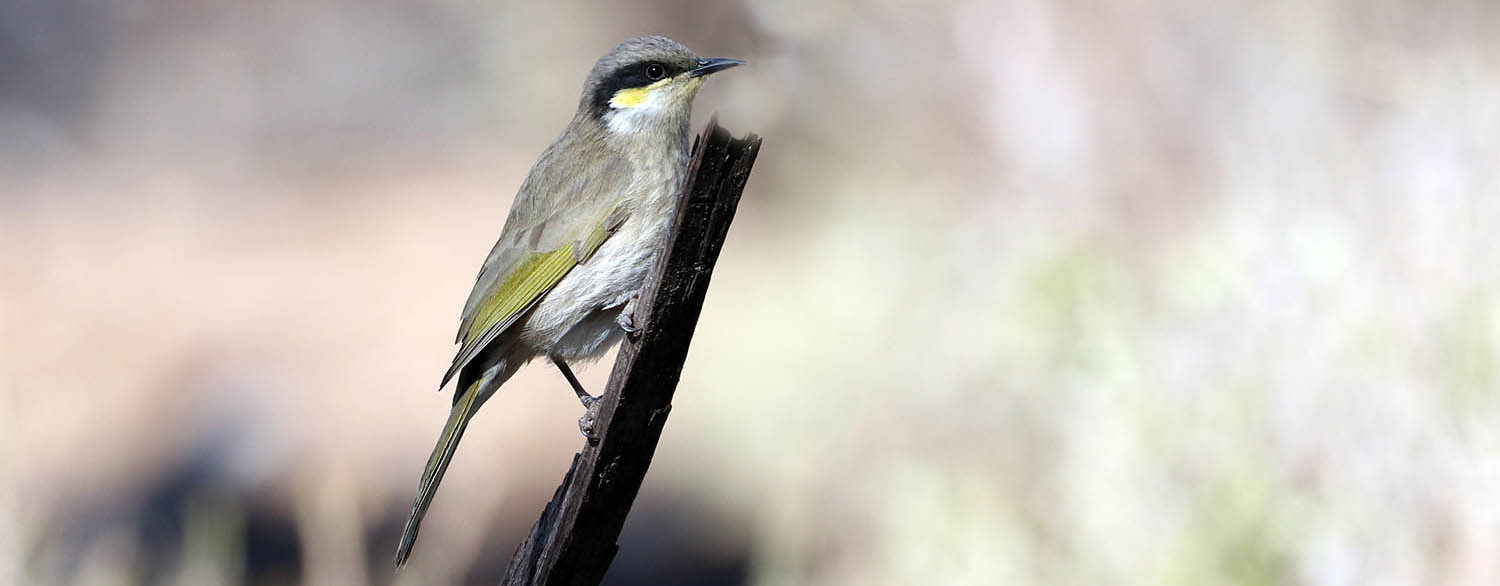 (Dryandra, WA)
(Dryandra, WA)Gavicalis virescens, 'Singing Honeyeater'. One of Australia's most widespread honeyeaters, found in dry habitats across most of the country except for the wetter habitats on the east coast.
 (John Forrest National Park, (Western Australia)
(John Forrest National Park, (Western Australia)Ptilotula ornata, 'Yellow-plumed Honeyeater'. Found in drier woodlands across southern Australia.
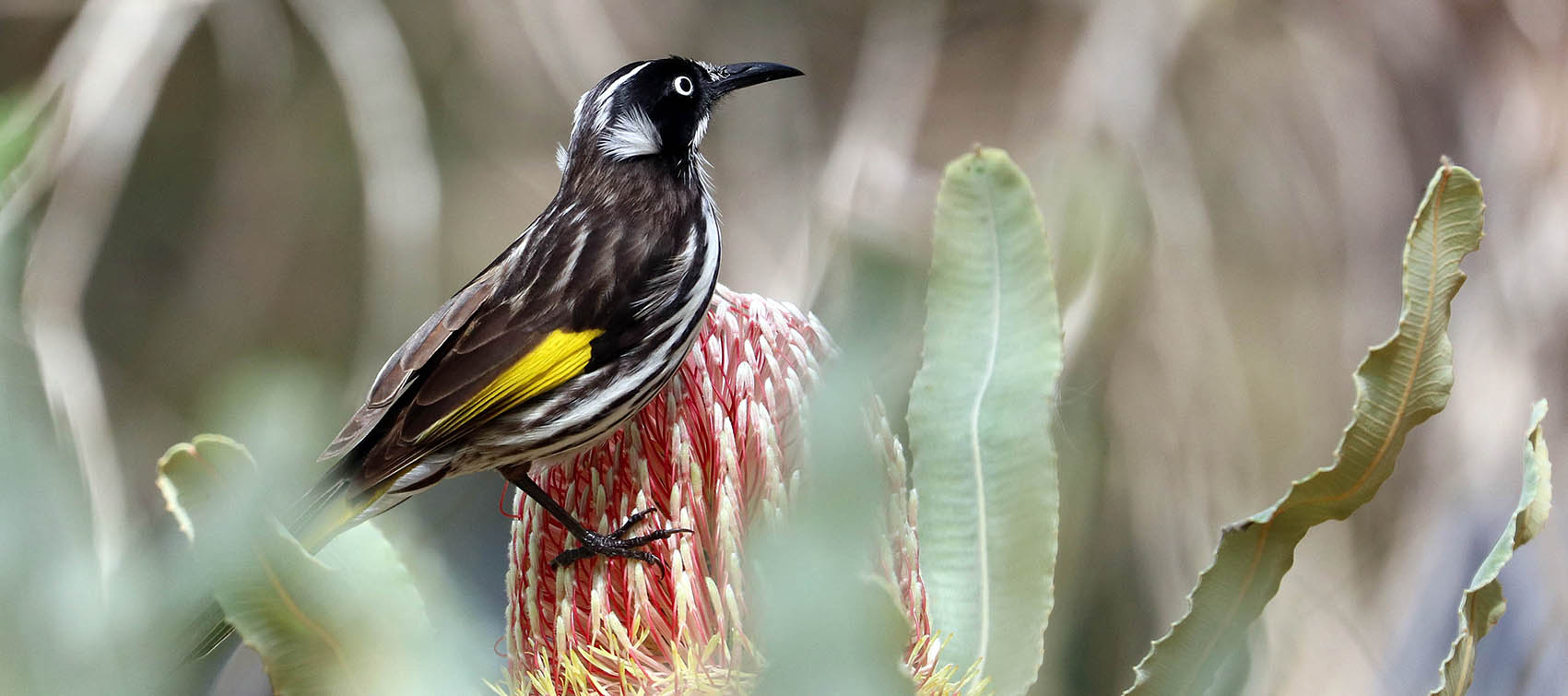 (Yanchep, Australia)
(Yanchep, Australia)Phylidonyris novaehollandiae, 'New Holland Honeyeater'. Striking contrasting colours. Energetic and fast, usually seen on large flowers, such as Banksias and Grevilleas, feeding on nectar. But also catches insects. Habitats include open woodland and heath. Found in south-eastern and south-western Australia.
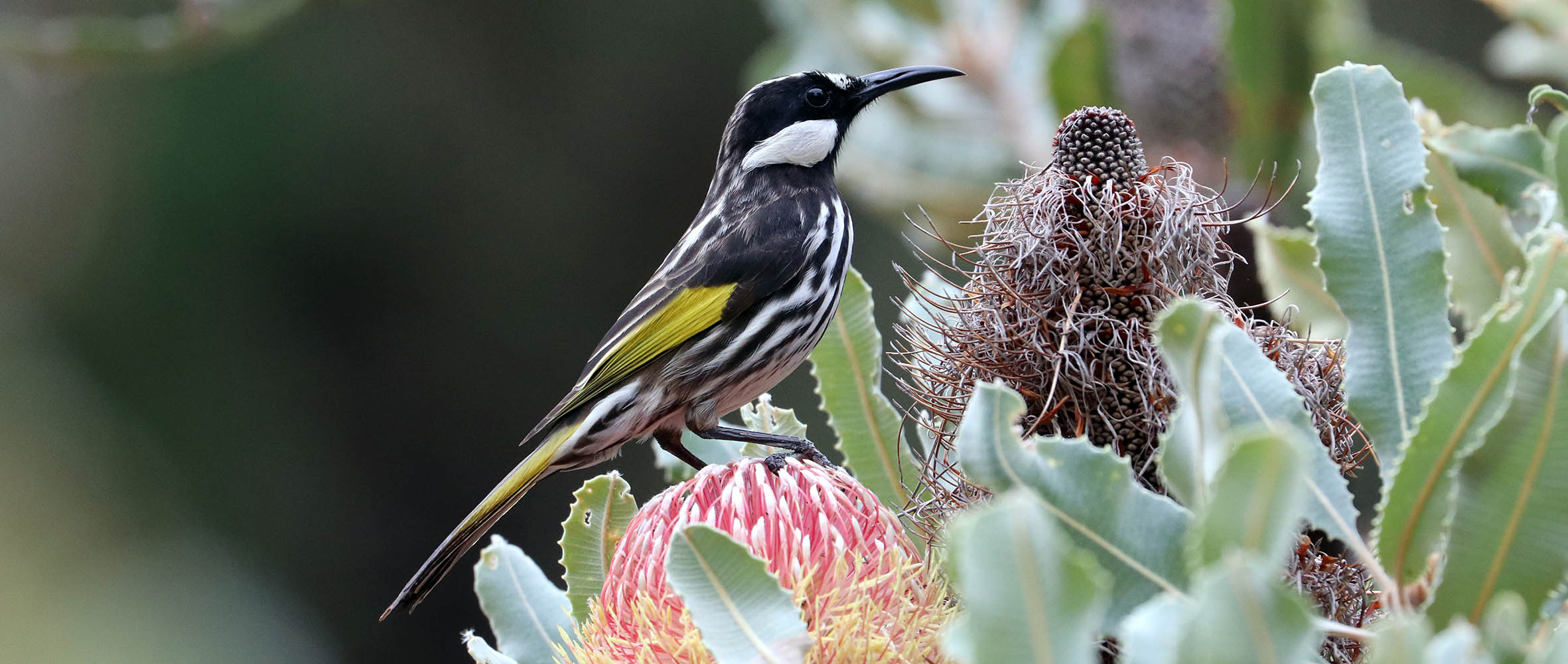 (Kings Park, Western Australia)
(Kings Park, Western Australia)Phylidonyris niger, 'White-cheeked Honeyeater'. Found in south-west and along east coast of continent. Usually associated with heath, such as Banksias.
 (Dryandra, WA)
(Dryandra, WA)Melithreptus chloropsis, 'Gilbert's/Western White-naped Honeyeater'. Small. Endemic to the south-west of Australia.
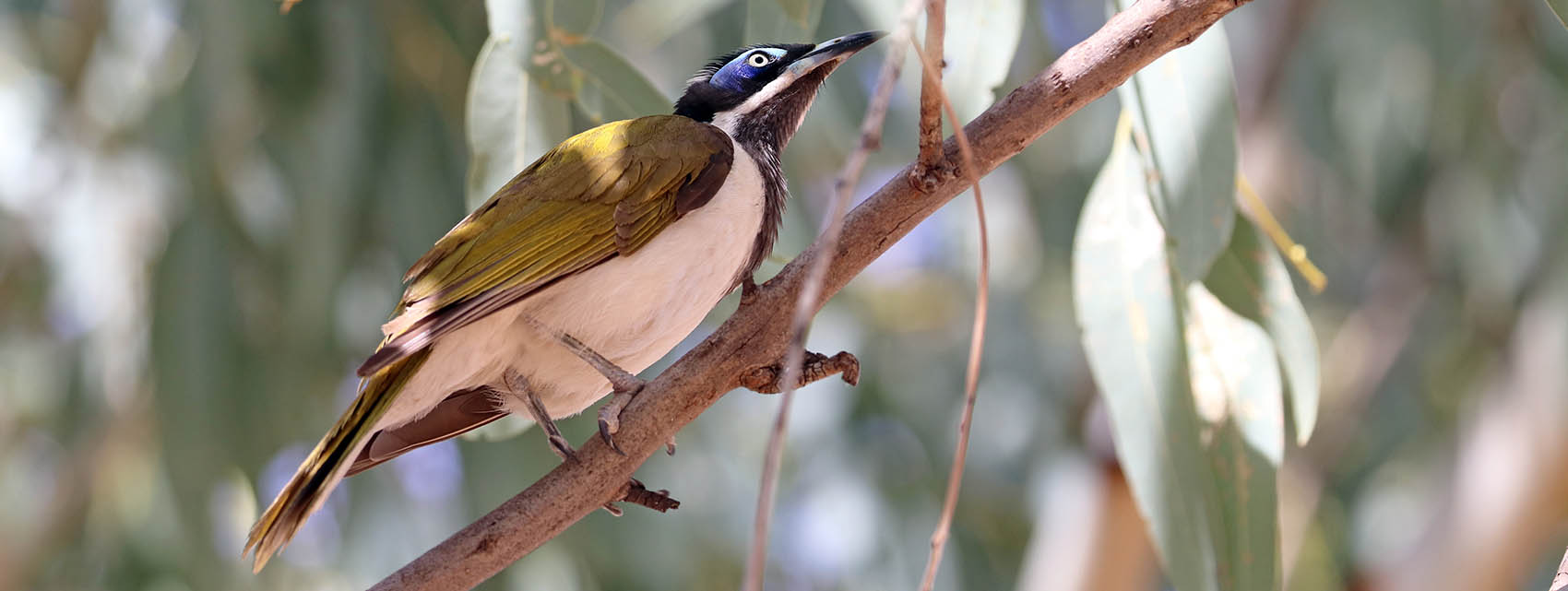 (Lloyd Jones Weir, Queensland)
(Lloyd Jones Weir, Queensland)Entomyzon cyanotis, 'Blue-faced Honeyeater'.
 (Lloyd Jones Weir, Queensland)
(Lloyd Jones Weir, Queensland)'Blue-faced Honeyeater' juveniles have green masks.
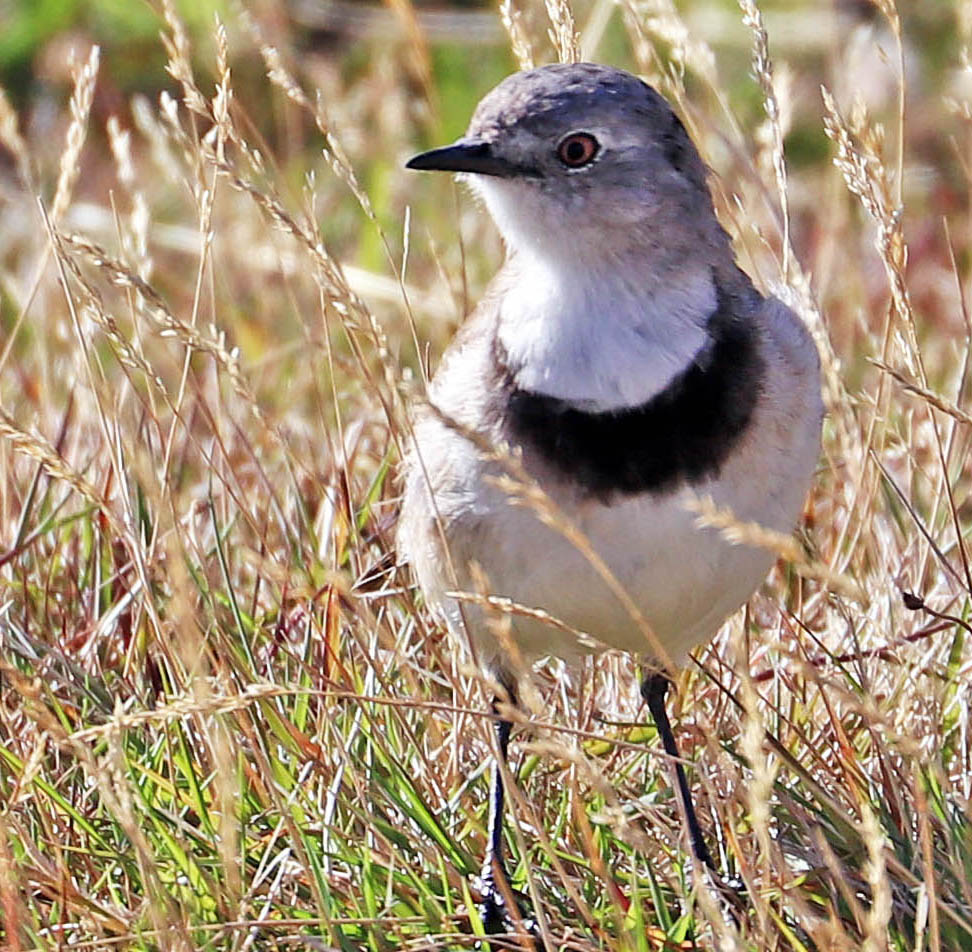
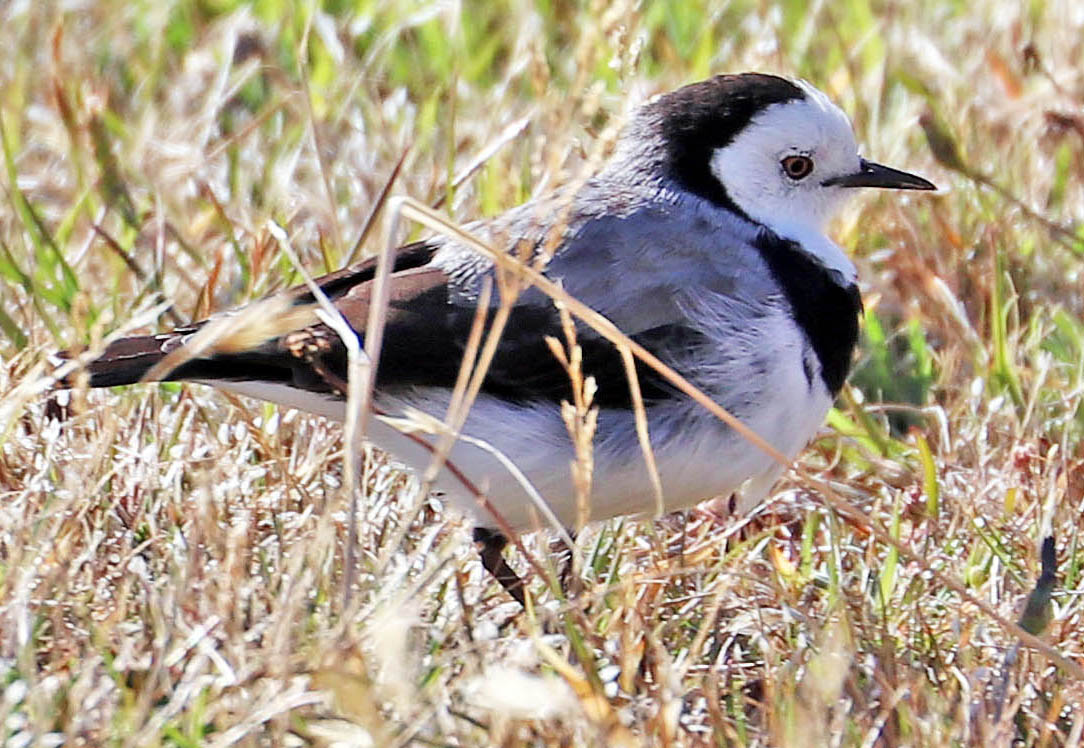
Epthianura albifrons, 'White-fronted Chat'. Found in open arid and coastal habitats across southern Australia.
Family Pachycephalidae: Shrike-thrush & Whistlers
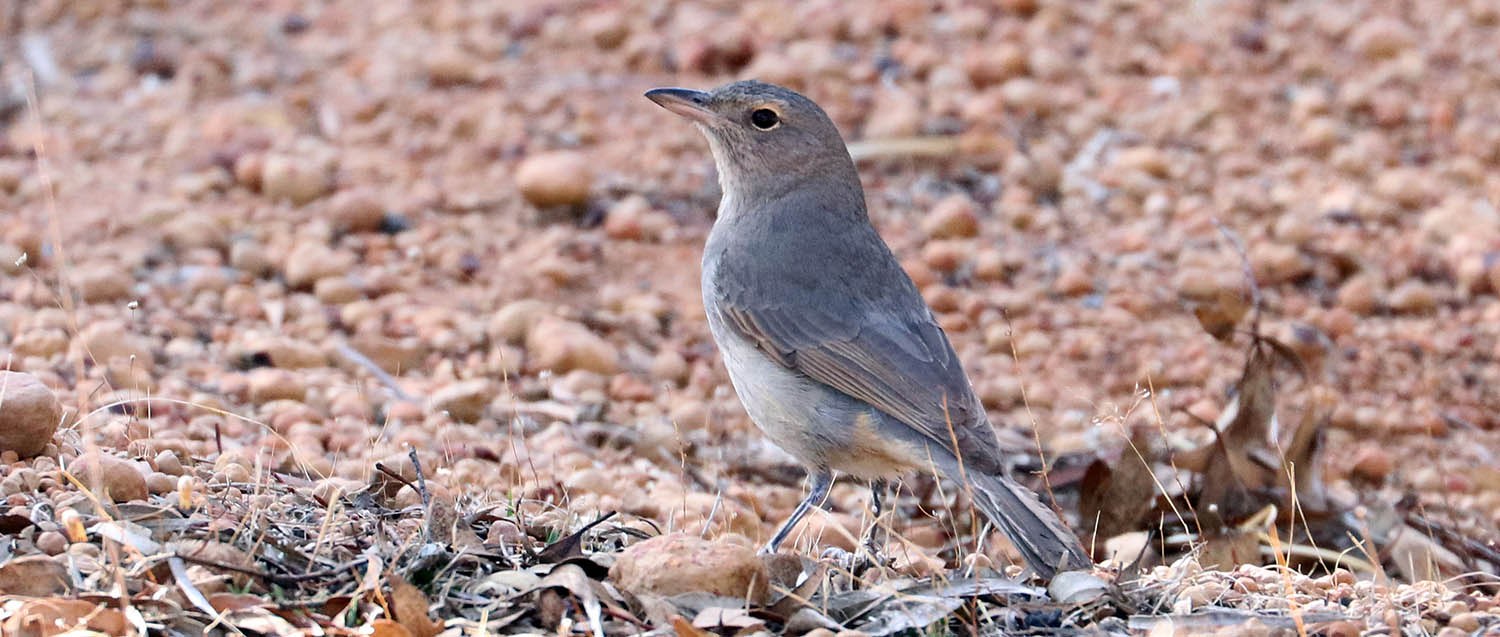 (Western Australia)
(Western Australia)Whistlers, as suggested by the name, have loud whistling tuneful calls.
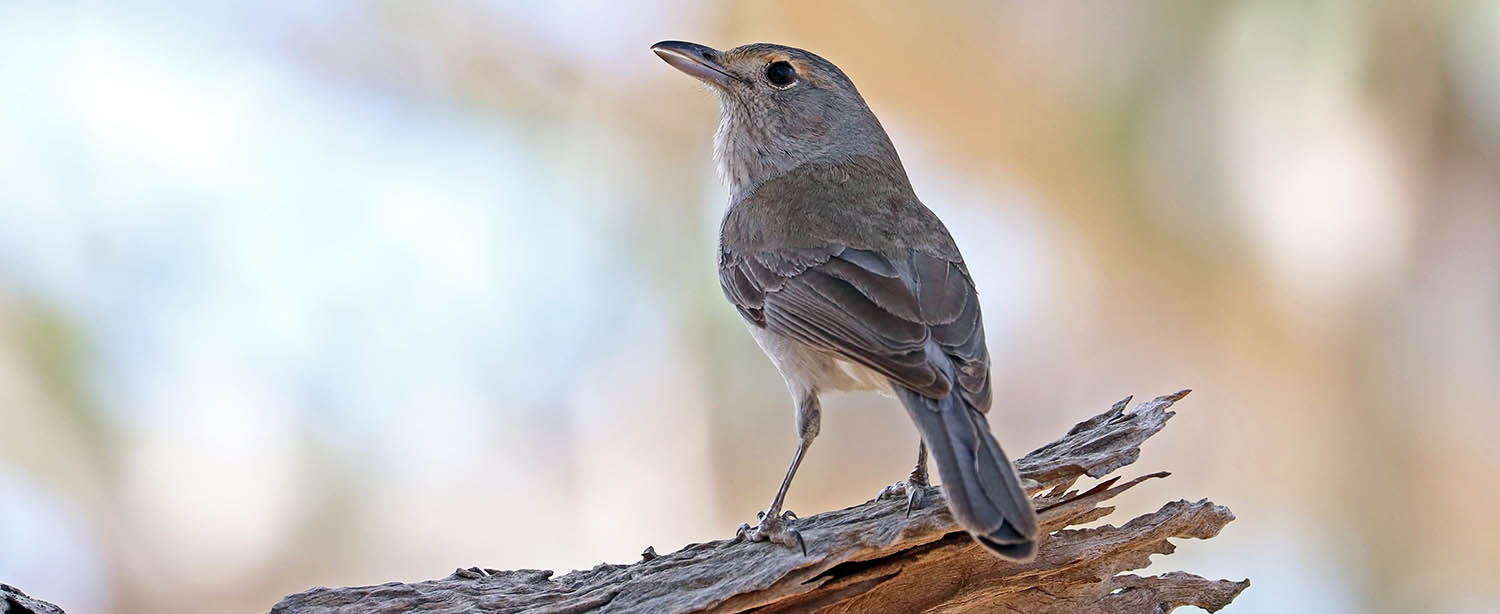 (Queensland)
(Queensland)'Grey Shrike-thrush'.
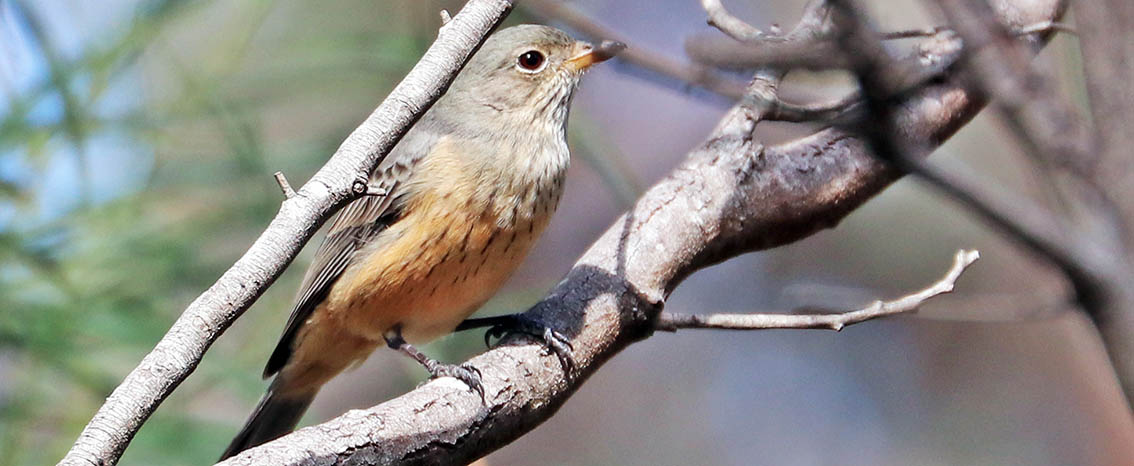 (Yanchep)
(Yanchep)Pachycephala rufiventris, 'Rufous Whistler' (female).
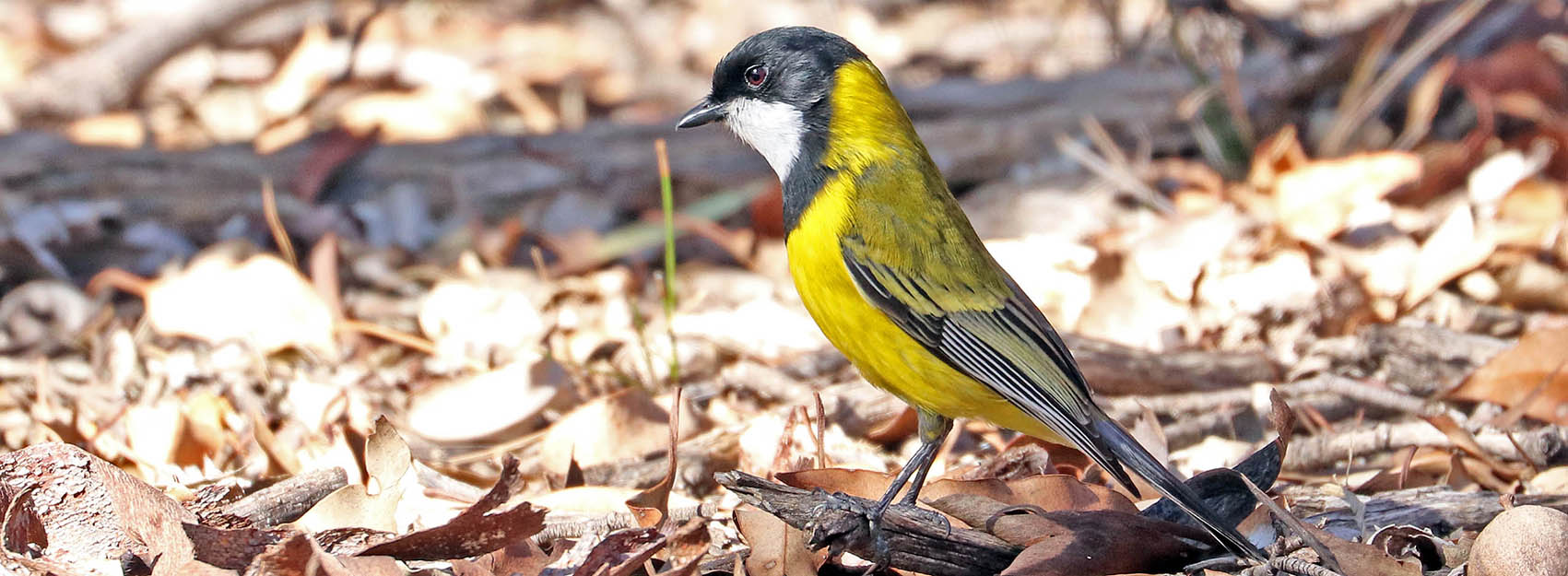
Pachycephala occidentalis, 'Western Golden Whistler' (Dryandra).
Family Campephagidae
Coracina spp. 'Cuckoo-shrikes'
A genus of about 22 species found in Asia and Australasia. They are not closely related to either cuckoos or shrikes. They usually shuffle their wings upon landing.
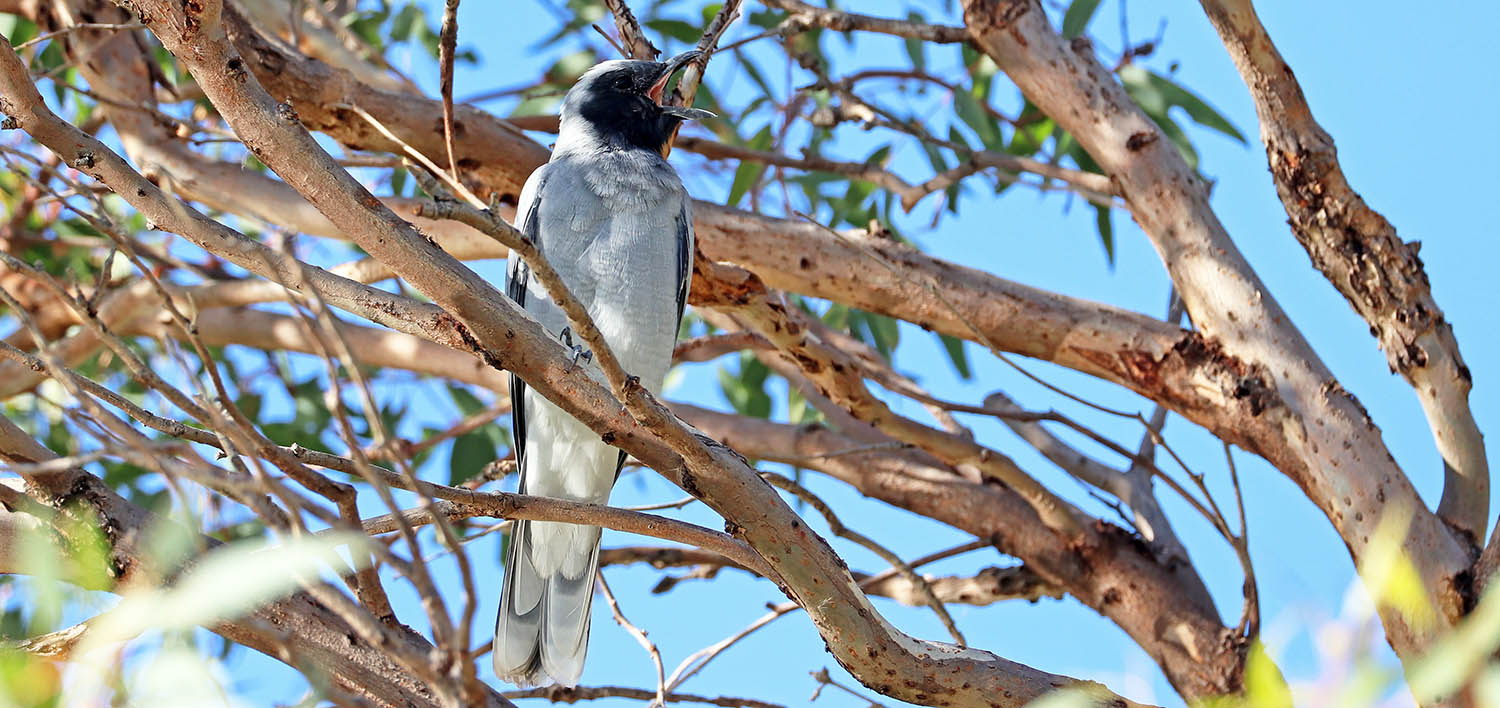 (Herdsman Lake, Western Australia)
(Herdsman Lake, Western Australia)Coracina novaehollandiae, 'Black-faced Cuckoo-shrike'. Very common and widespread bird in different habitats throughout Australia. It is so common that in bird surveys the long name of the bird is shortened to "Biffkiss" - BFCS.
Family Artamidae: Woodswallows, Butcherbirds & Australian Magpie
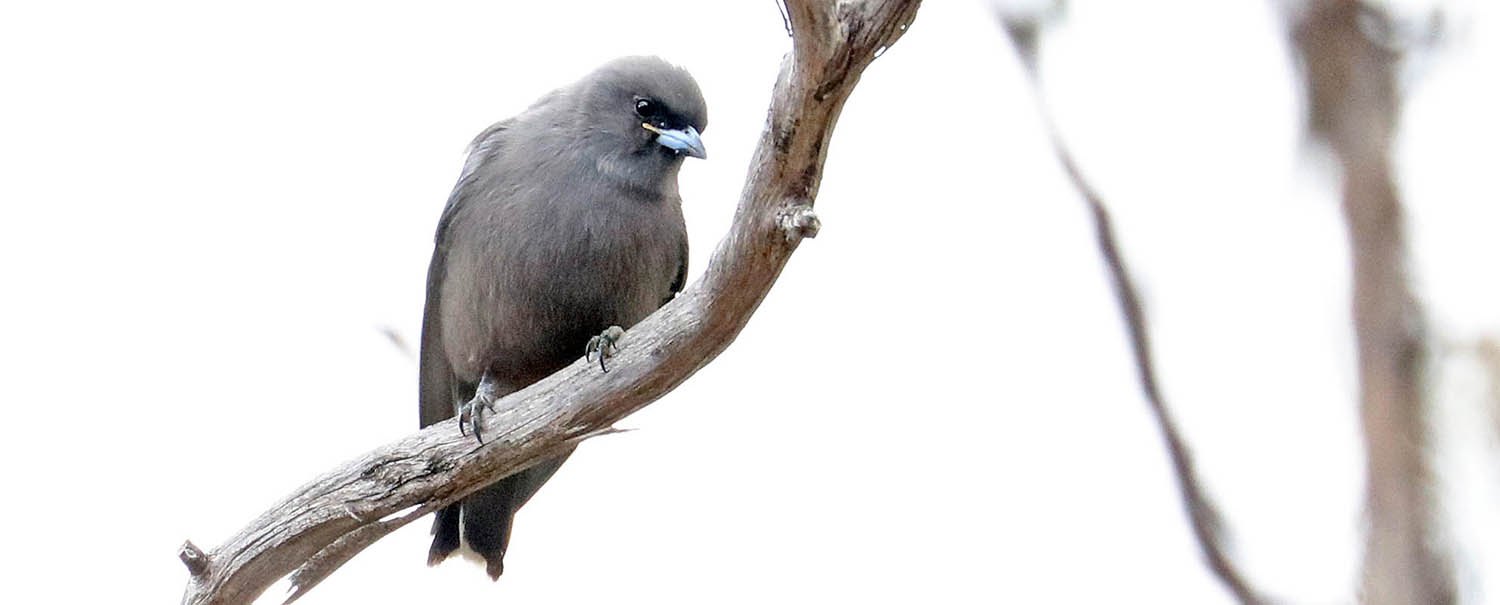
Artamus cyanopterus, 'Dusky Woodswallow' (Dryandra, Western Australia).
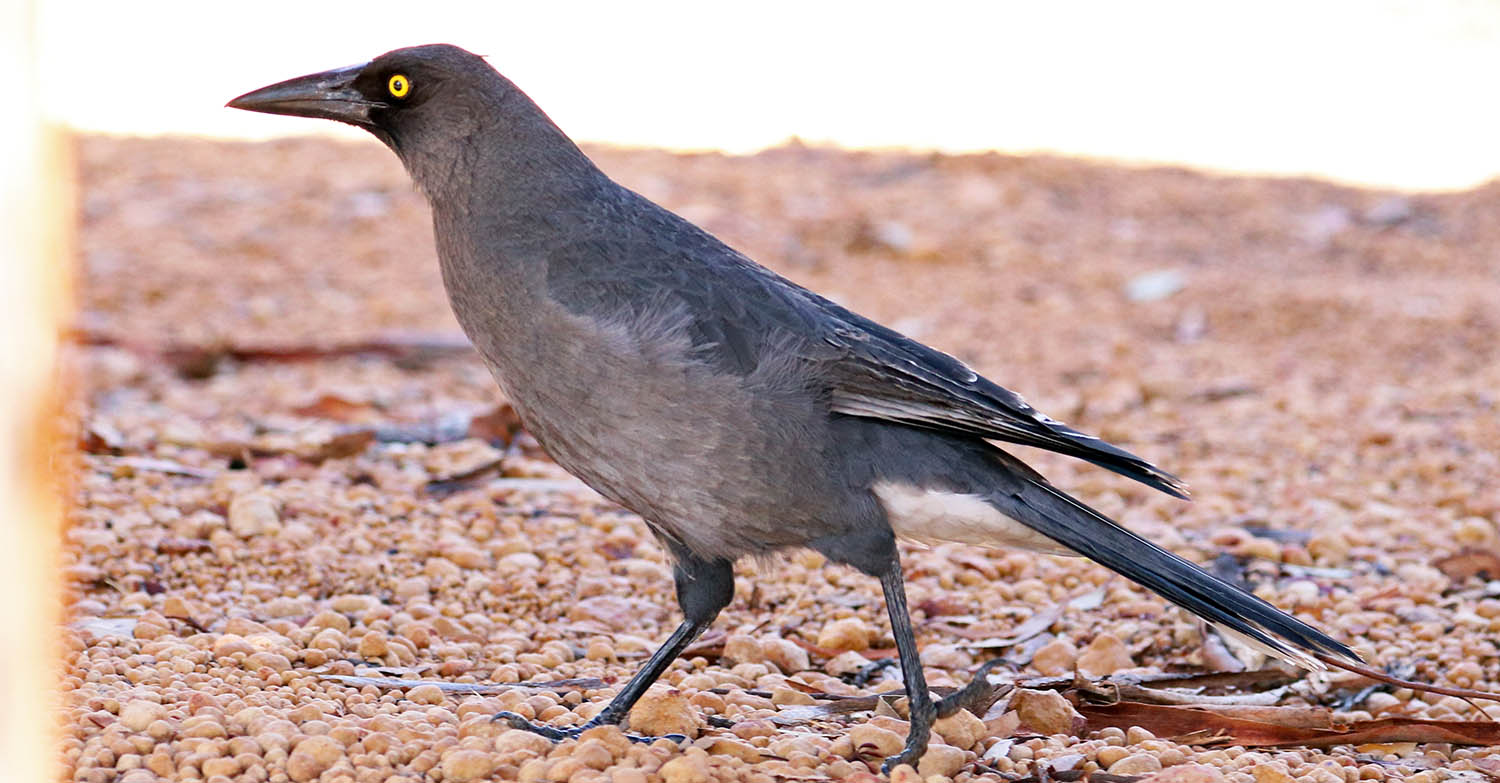 (Dryandra, Western Australia).
(Dryandra, Western Australia).Strepera versicolor, 'Grey Currawong'. Found in various habitats right across southern Australia.
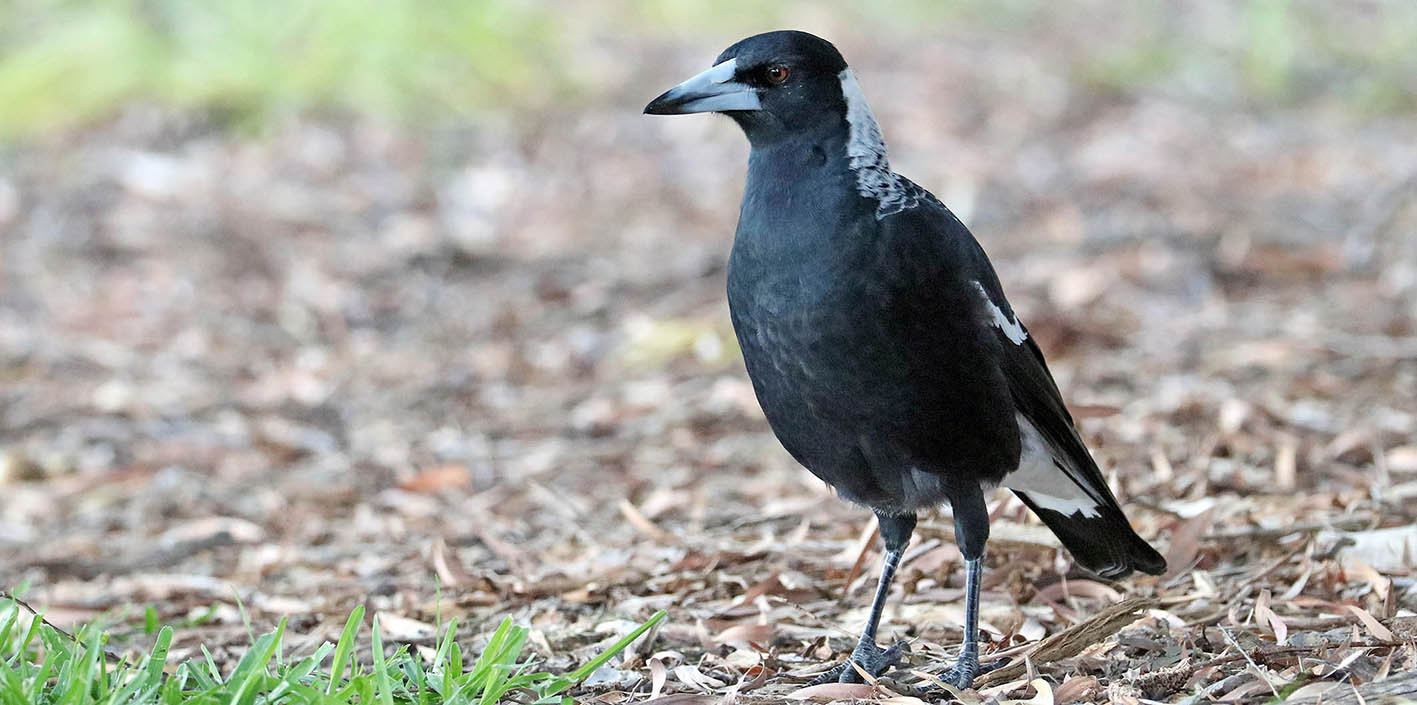
Gymnorhina tibicen, 'Australian Magpie', (Kings Park, Western Australia).
Family Rhipiduridae: Fantails
 (Lane Poole National Park, W.A)
(Lane Poole National Park, W.A)Rhipidura albiscapa, 'Grey Fantail'. Active, twirling around catching insects. Found in a variety of habitats across Australia.
Family Dicruridae: Drongos
Most species are found in Africa, Asia and Australasia.
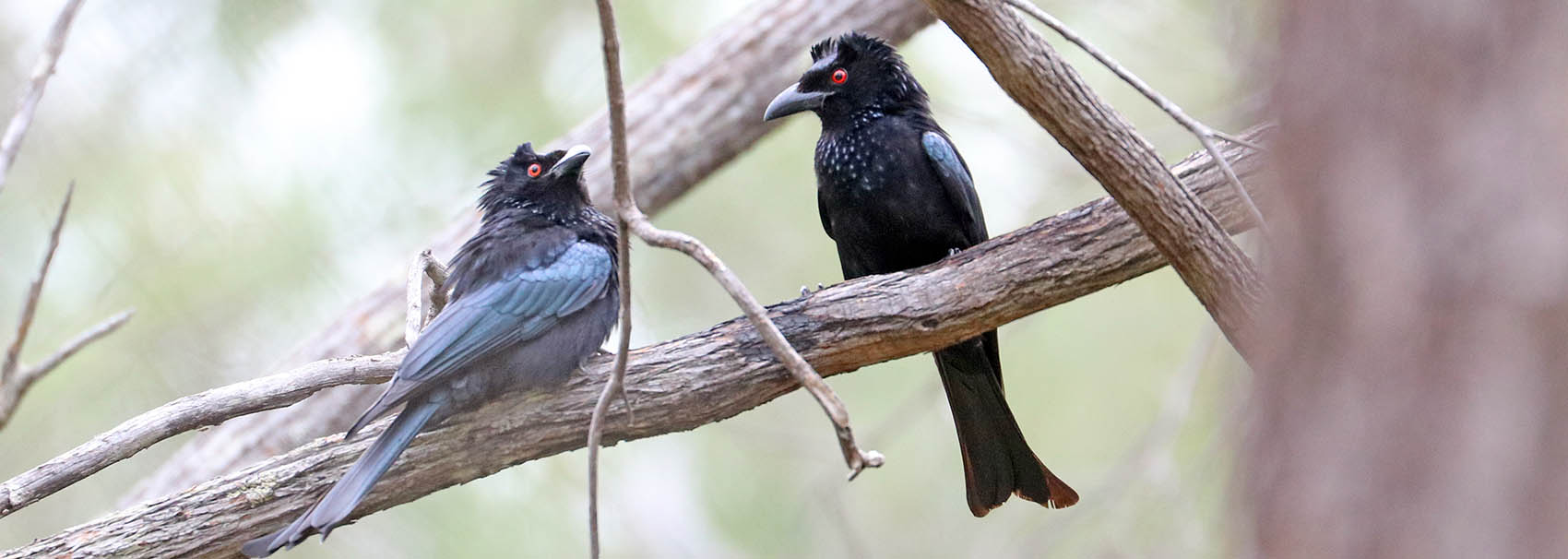 (Crow's Nest National Park, Queensland)
(Crow's Nest National Park, Queensland)Dicrurus bracteatus, 'Spangled Drongo'. The only drongo regularly found in Australia. Can be quite noisey, with 'scissor' call and much squawking which apparently includes mimicry. This species migrates down into the temperate Australian woodlands every spring to breed. Found in eastern and across northern Australia, New Guinea, and into eastern Indonesia.
Family Corcoracidae: Australian Mudnesters
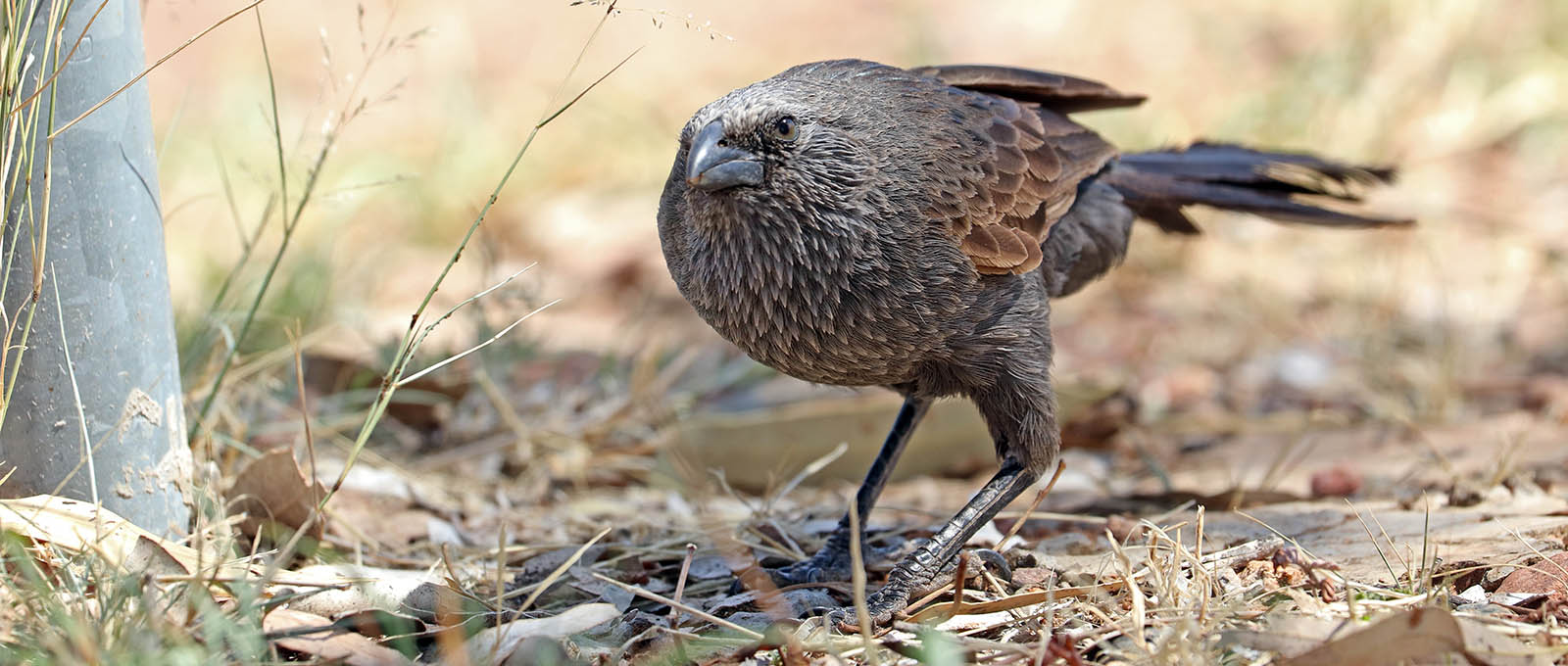
There are only two species in this family, and both are endemic to Australia.
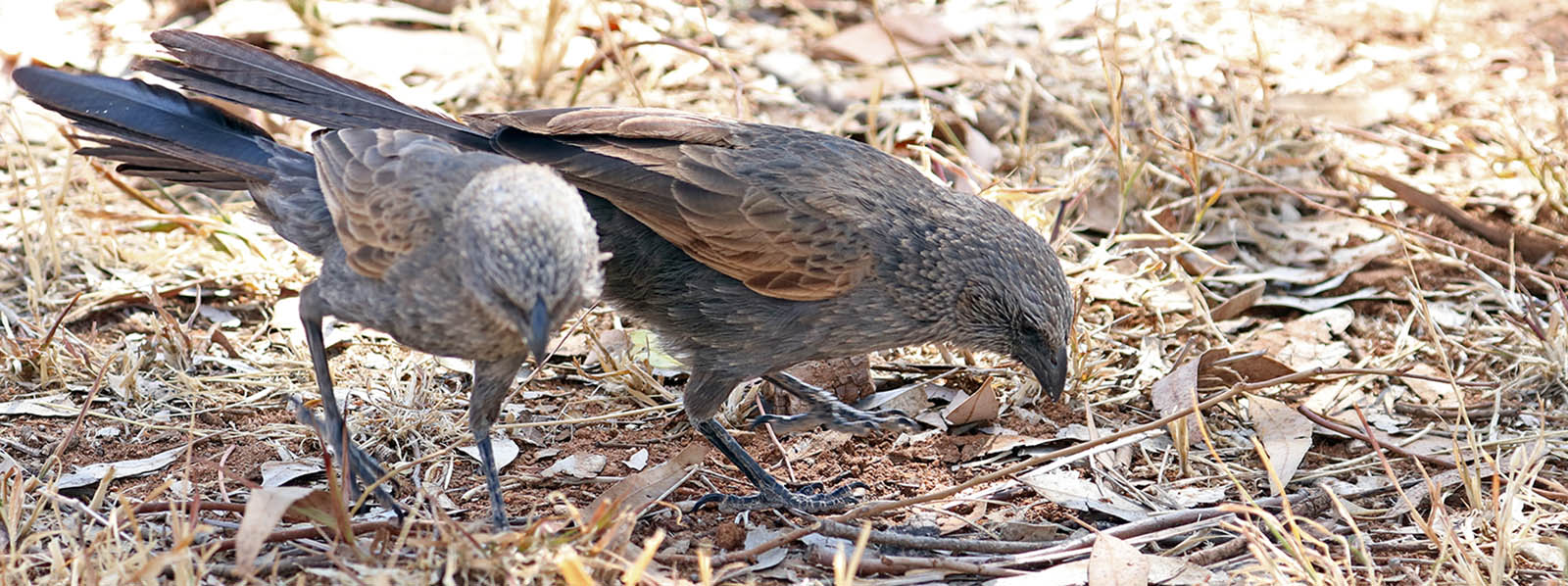
Struthidea cinerea, 'Apostlebird'. The main common name comes from the fact that this bird is almost always in groups, sometimes a dozen, the number of apostles of religious figure Jesus Christ. Because this bird is common and has a lot of character, it has a lot of other common names; grey jumper, lousy jack,”awky sqwarky” or CWA (country womens association) bird. They have a variety a cute squawks and squeaks and are lively, curious and fun to watch. They live in various types of woodlands across the eastern third of Australia, where they are most common more inland, and often scavenge around camps and picnic areas.

Corcorax melanorhamphos, 'White-winged Chough'. Large black bird with large bulging bright blood-red eye and curved beak. hHangs out in gangs. Found in open forest and woodlands in south-eastern Australia; seem more obvious in in higher altitude areas. Not related to the superficially similar Choughs of Eurasia, which are in the same family as crows.
Family Corvidae
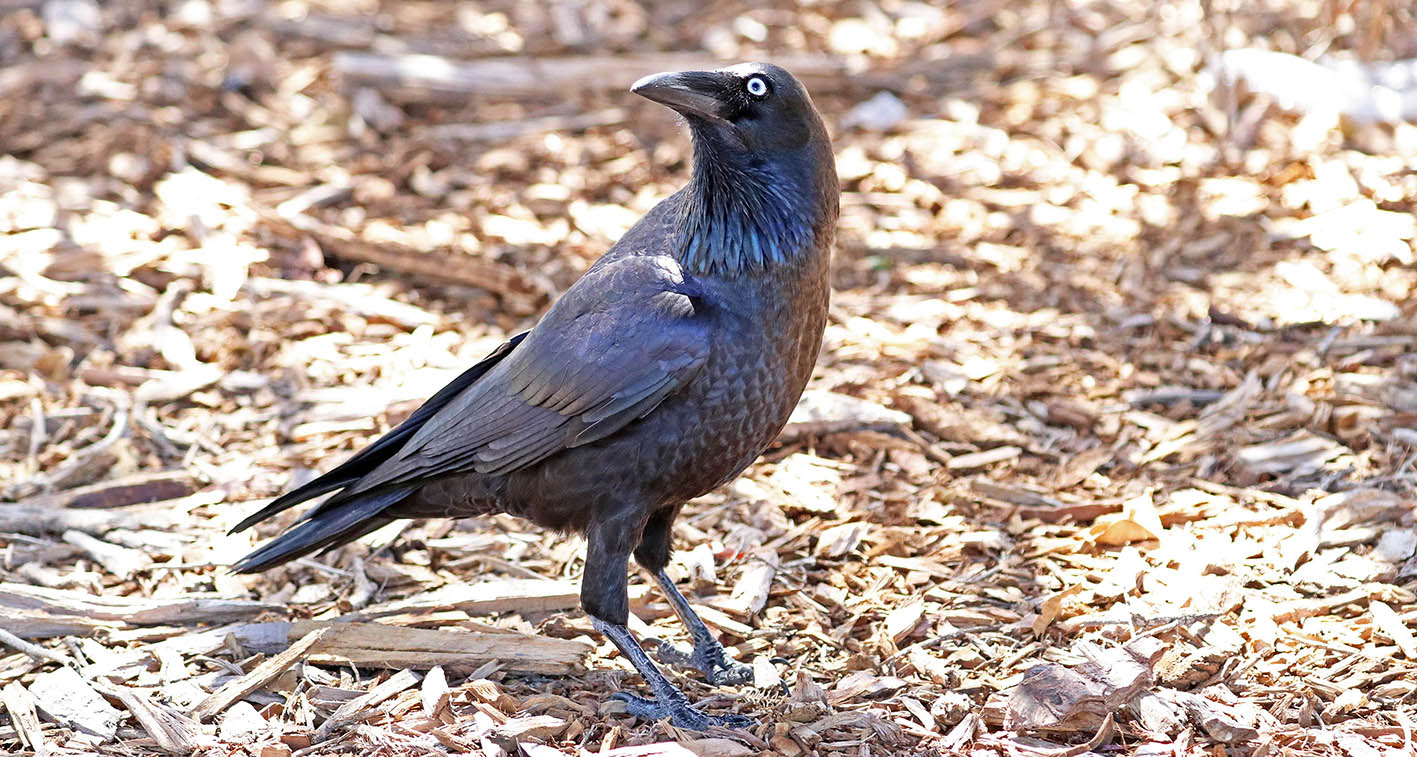
Corvus coronoides, 'Australian Raven', (Rottnest Island, Australia). Large obvious 'beard' of throat feather hackles and white eyes. The more common larger corvid in south-eastern and south western Australian woodlands.